
DLADLA100
Works
EXHIBITING ARTISTS:
BORSOS LŐRINC | Loránd BÖGÖS | Jivens O. BREEWENSES | Igor & Ivan BUHAROV | Andrea FAJGERNÉ DUDÁS | Márton FERNEZELYI & András KAPPANYOS & Imre LEPSÉNYI & Zoltán SZEGEDY-MASZÁK | Katalin HAÁSZ | Péter HECKER | Előd IZSÁK | Balázs KICSINY | Margit KOLLER | István KOVÁCS | Frigyes KŐNIG | K.U.T.A.Cs. (Miklós MÉCS & Csaba VÁNDOR) & VirágJudit Galeri (Virág BOGYÓ & Judit FISCHER) | Juli LACZKÓ | Anna PETERNÁK | Katerina ŠEVIĆ & Tehnika Schweiz (Gergely LÁSZLÓ & Péter RÁKOSI) | Lellé SZELLEY | Kornél SZILÁGYI & Csaba VÁNDOR | Zsuzsa SZTRUHÁR | Edit TANGL | József TASNÁDI
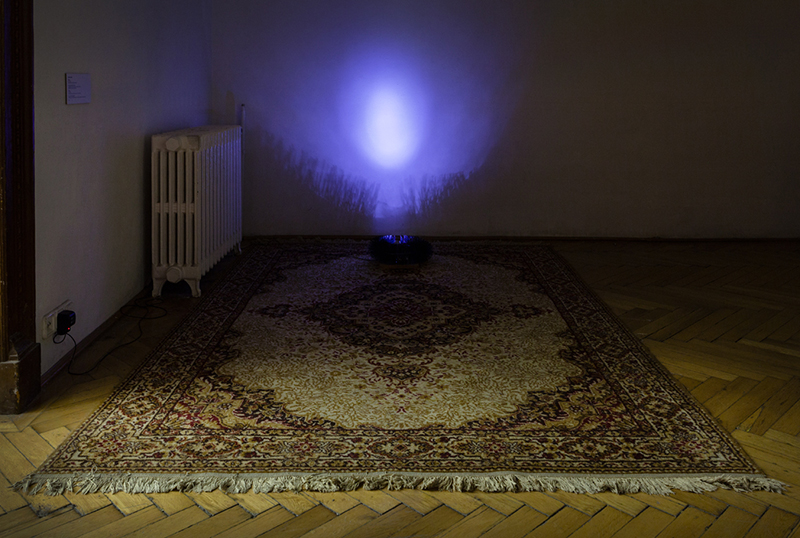
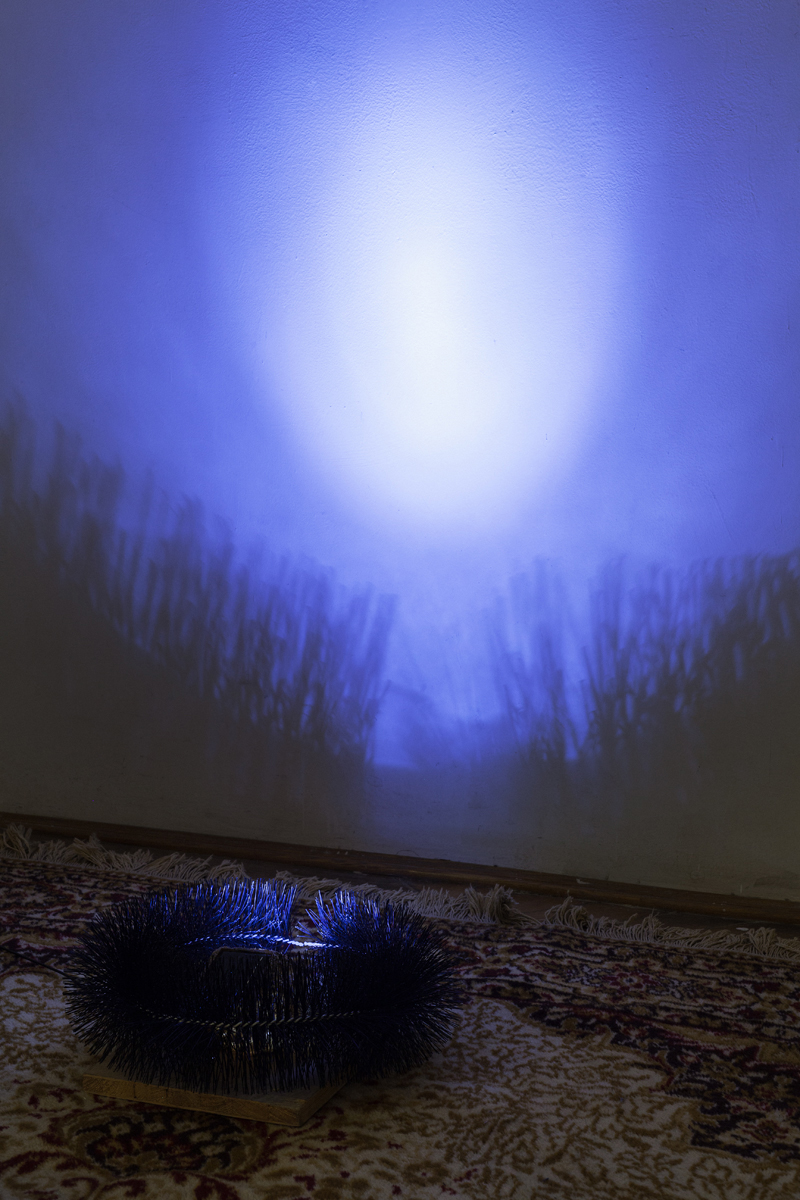
LŐRINC BORSOS
Helicon
2015
readymade
rain gutter guard, solar powered lamp, wood board
40x40x10 cm
Electronics: Márk RADICS
Collaborators: Kata OLTAI curator, art historian; Gábor SZENTELEKI painter
“If this was the only work the two of you made in your whole lives, it still would have been worth it.” (M.E.)
“And what does that have to do with Dada?” (F.F.)
„Narnia is a f.cking lie.” (J. B.)
One day, Borsos and Lőrinc went to a DIY store and bought themselves an object each: Lőrinc got a rain gutter guard, Borsos choose a solar powered lamp for the garden. Later on, they assembled the objects randomly in their studio. The work’s title is a result of free association. In Greek mythology, Helicon was the mountain where the Muses lived. The work is part of the Self Critical Portrait series (2013-2016).
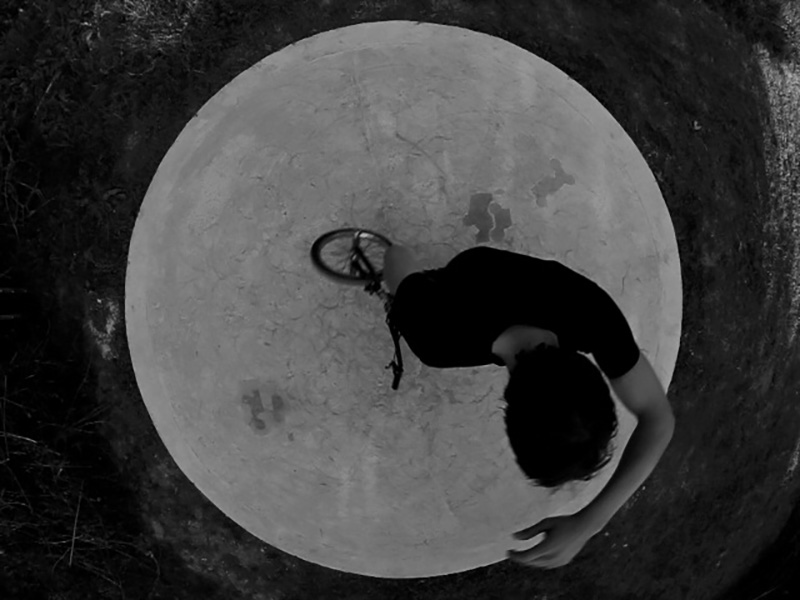
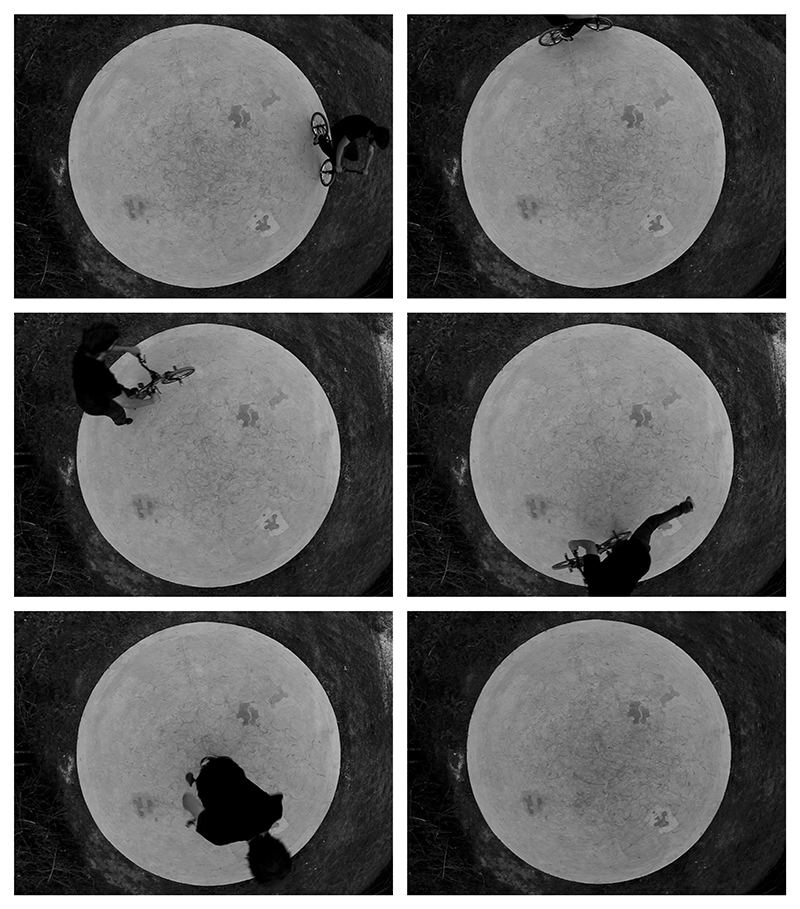
Loránd BÖGÖS
Inner Circle
2010
video documentation, manifesto
video, print
1’44’’
My works used to follow a linear compositional principle. For many years, in formal transliterations repeated to the point of absurdity, I would try to turn an ichnographical thesis into a three-dimensional form. I was thus attempting to extend the domain of architecture, but as a sculptural minimum, with only a formal toolkit left. After this had been exhausted, I shattered all my works and concreted them into a flat, circular space, 5 meters in diameter. I built a scaffolding 3 meters above the circle, from which I recorded a sequence of movements using an 8mm fisheye lens. The lens turned the circle into an illusionary spherical surface; an optical alteration that gave me the opportunity to see myself in a space that is significantly different from reality and overwrites my former planar ideas. In turn, movement provided a new sculptural equivalent to the otherwise destroyed works. After the shooting, I imagined the film to be projected back onto the original surface, but this did not happen there and then, so I am currently facing new problems of documentation and exhibition. I hope that the elimination of the original scene will present me with a more stable set of criteria with less personal bonds.
After all, simply wanting to illustrate a destructive and constructive gesture, something that may have crystallized into an explanation over the years, can also be regarded as a “thesis” of some sort.
Loránd BÖGÖS
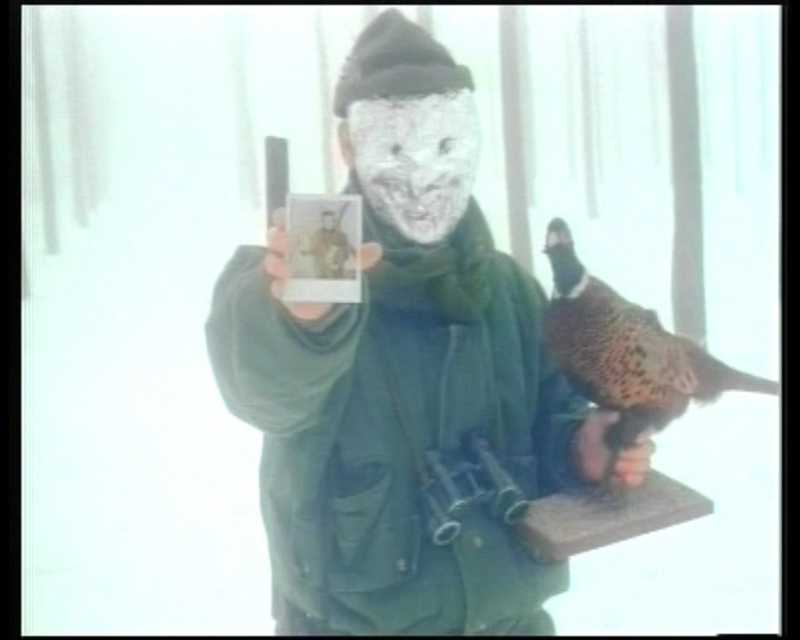
Igor & Ivan BUHAROV:
Hotel Tubu
2002
color short film
35 mm film transfer to video
4'00''
“Most of the souls living here will move to a higher dimension.
The workers of the Cosmos want nothing else but what the Divine will wants and the Karma allows.
This force should not work in any other way. If it worked in another way, it should stop, it should not work.”
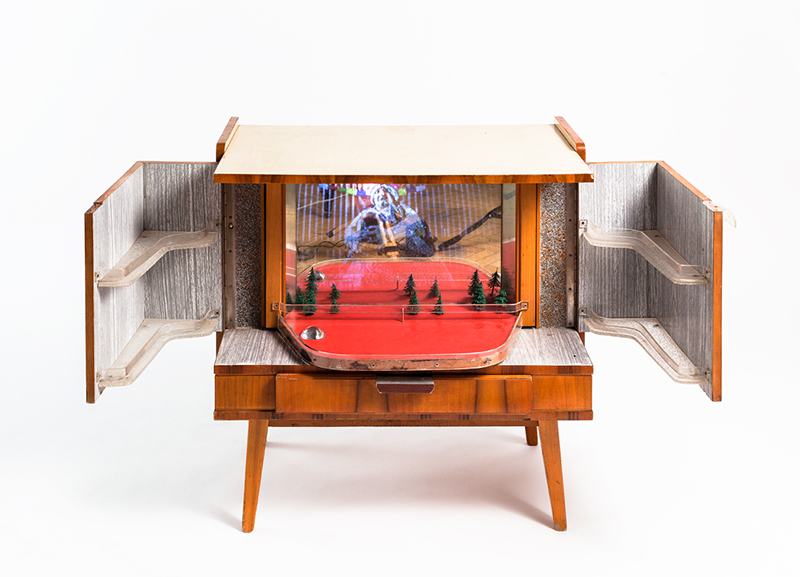
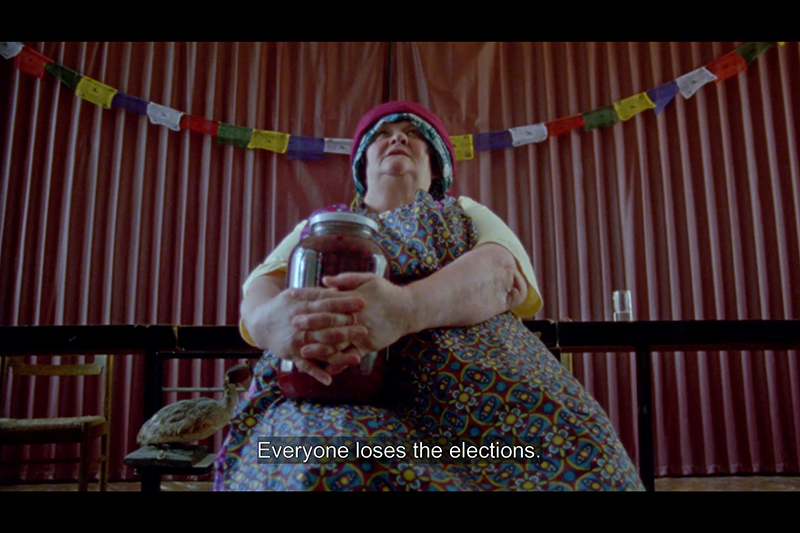
Igor & Ivan BUHAROV
The Inarut Prophecy
2014
video installation
16mm film transfer to video, cupboard
75x50x75 cm, 2'19''
Starring Mrs. Marika BAGDI
Camera: Marcell RÉV
"Shame is practiced as the highest state of consciousness."
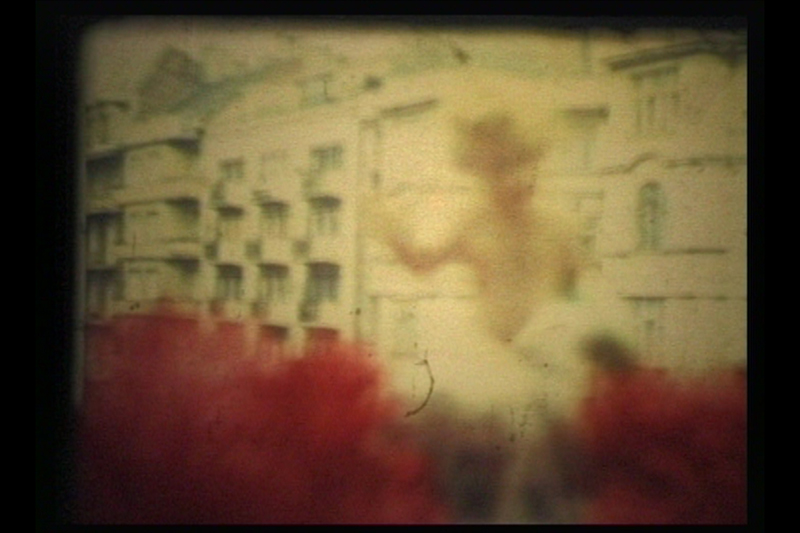
Igor & Ivan BUHAROV & Hans BLUME (Csáki László):
Is the Killer Going to the Cemetery?
2001
short film
super 8 film transfer to video
8'00''
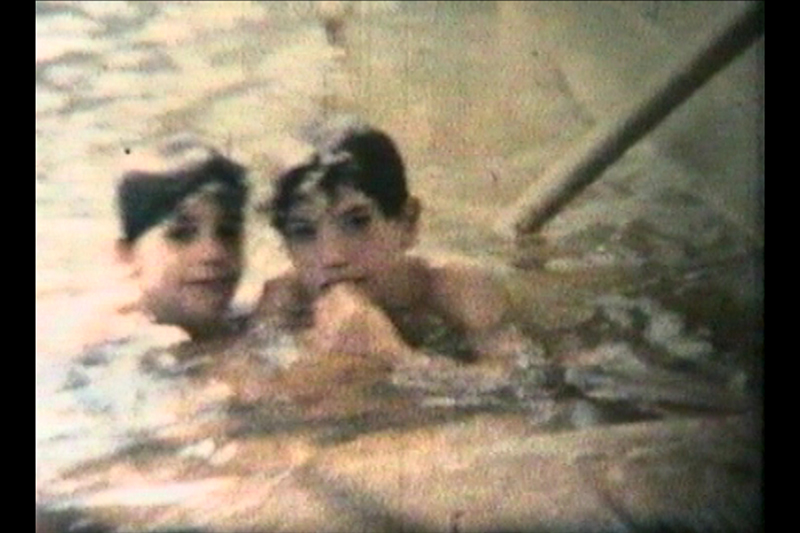
Igor & Ivan BUHAROV:
Sunday
1994
color short film
super 8 film transfer to video
4'00''
“Sunday, the weather is normal,
I kiss the wind, feed pigeons,
eat a hamburger”
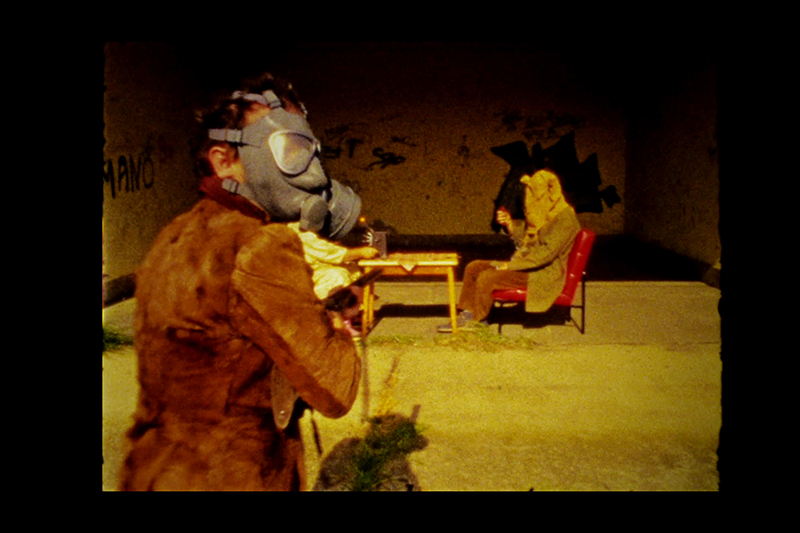
Igor & Ivan BUHAROV:
The Price of Memory
2015
color short film
super 8 film transfer to video
11'17''
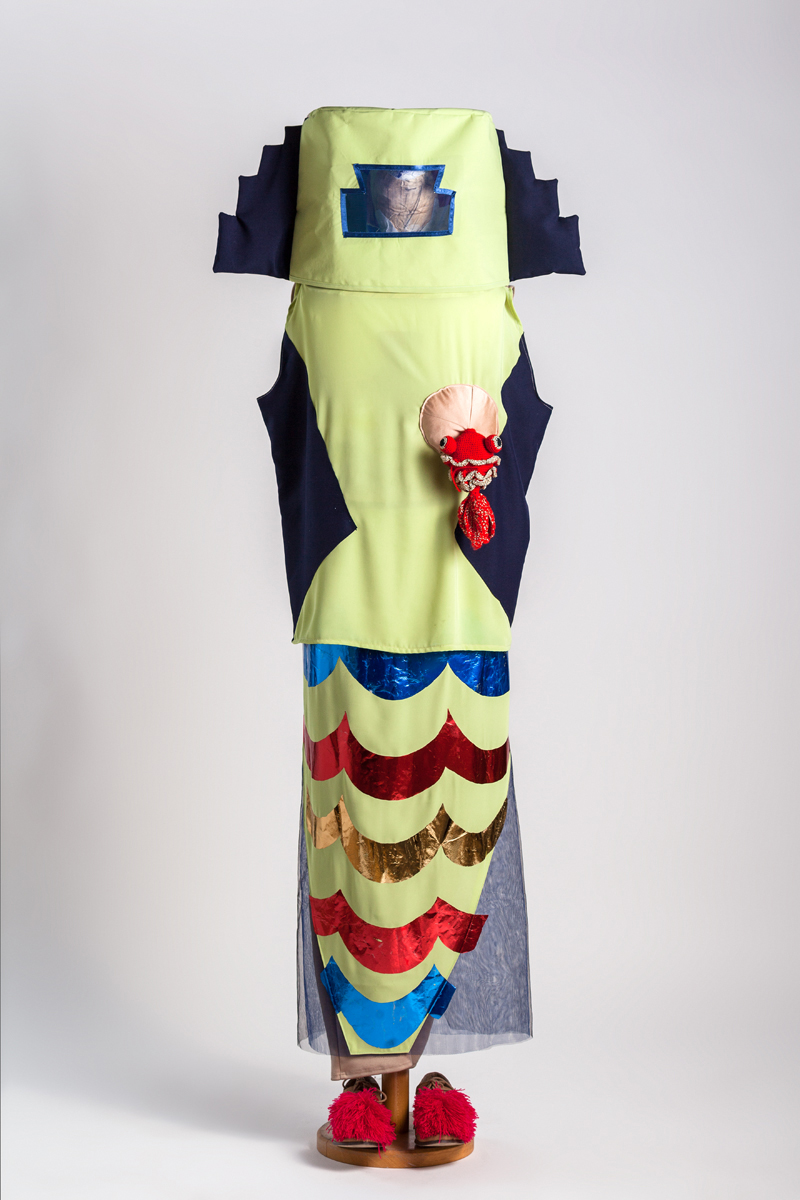
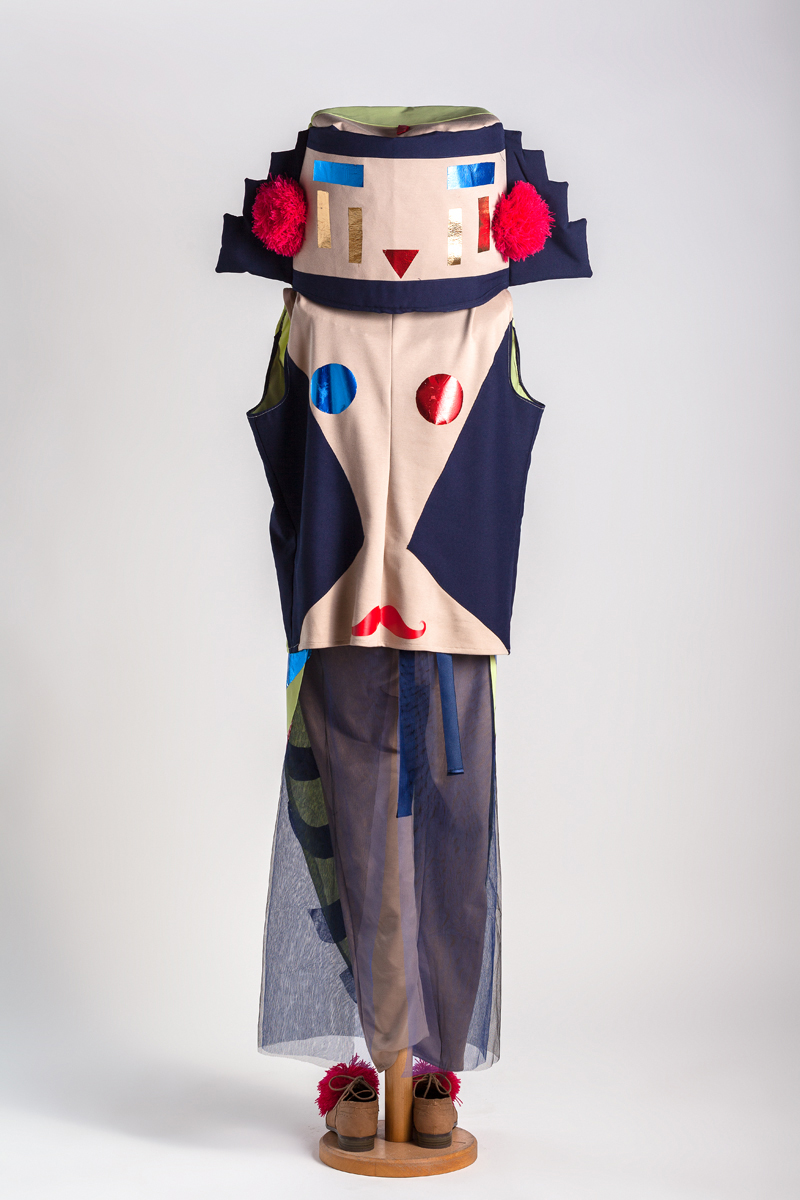
Andrea FAJGERNÉ DUDÁS
DADA DOLL
2016
performance, installation
mixed media
dimensions variable
The history and work of women artists takes central stage in my work. I reinterpret and reappropriate their works from my own perspective, with contemporary ideas attached. The installation DADA DOLL consists of a dress, a photo album, and a video. With this work, I reflect on five women artists who were defining figures of the DADA movement and created significant works. Emmy Ball-Hennings’ performance outfits, poems, and DADA-doll were important starting points for my work. Ball-Hennings was a defining figure of Swiss DADA and the wife of Hugo Ball, with whom they founded Cabaret Voltaire. Sophie Taeuber-Arp was also a member of the Swiss DADA and the wife of Hans Arp. Taeuber-Arp’s performance outfits, the painterly set of motifs that also appear on her costumes, and her Dada-dolls were the main sources of inspiration for my work DADA DOLL. I also evoke the dancer Jacqueline Chaumont, an active participant of the Parisian DADA, by attempting to learn and perform her movements. During her performances, Chaumont wore outfits by Sonja Delaunay. The fourth artist is Hannah Höch, member of the Berlin DADA, whose collages and photo albums have already surfaced in my work from Dresden (2010). Höch also had a Dada-doll, made after her first abortion. When the doll was exhibited, she named herself and Raoul Hausmann as its parents. My work also refers to the performances, dances, and poetry of Baroness Elsa von Freytag-Loringhoven, a Dadaist artist of German origins who worked in New York. I also recite one of her poems. Almost all of the above-listed women artists had their own DADA-doll and took pictures of themselves with it. As I already have my own DADA-doll (a goldfish), there was no need to prepare a new one for this occasion. In the framework of Biodiversity and Supernatural (with Ágnes Eszter Szabó), I attached this goldfish to the shirt we designed, and breastfed it throughout the performance. I consider the breastfeeding of a goldfish to be a DADA gesture.
In my dance movements, I also reflect on Orsolya Drozdik’s work and free dance titled Individual Mythology.
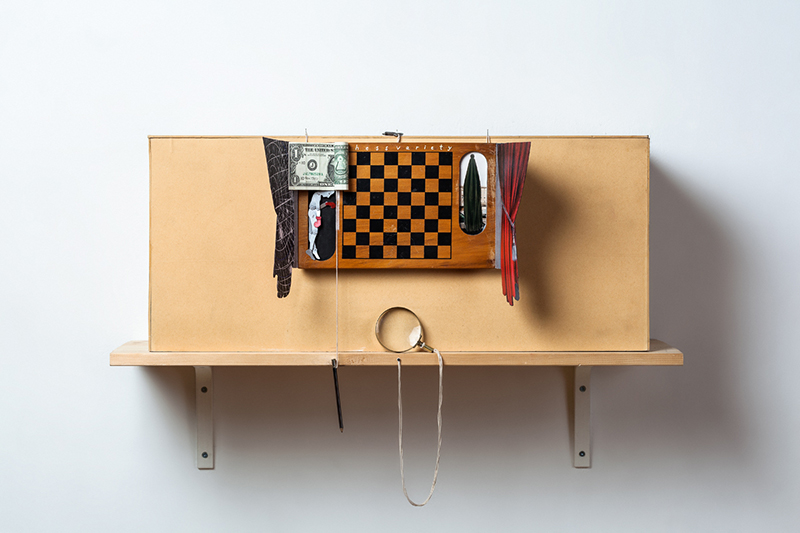
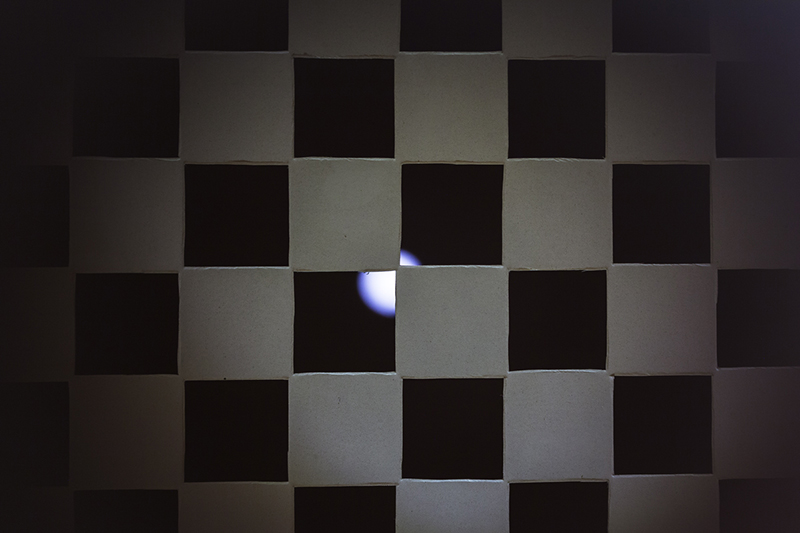
Katalin HAÁSZ
Chess Variety
1997–2016
object
mixed media
30x25x70 cm
Dada for me is a benchmark, a signpost that should be nailed on your studio’s door (if you have one), similarly to the way the old woman in the fairytale asked the figure of Death to write "tomorrow" on her door. Chess Variety is a square-shaped peep-box that was part of my 1997 diploma work. From the two sides of the box, you can peek into a space bordered by a chess-lattice cutout, lit by a single source of light. As a result of the interior lighting and the two peeping holes, the scene inside the box has two different, opposing views: negative and positive, male and female, if you have got this far in reading, you may receive a dada-present, you can claim it at katihaasz at gmail dot com. The exterior front piece of the box will feature a recently-made collage (the original one showed a scene mounted on a chessboard, but has been destroyed), made up in part of reproductions of my work, which is my way of paying homage to the 100-year-old Dada. My thesis, also written in 1997, is closely related to Chess Variety, reflecting upon a photograph of Duchamp playing chess with the nude Eve Babitz: "The scene can also be looked upon as one of many interpretations of Large Glass. The woman stands for the nude and Duchamp for the thinker. The relationship between the two is transposed to the playing field and the chess clock; they are separated like a bride from her bridegrooms. On the two hemispheres of the Large Glass, the relationship between the two protagonists is the arc of a complex structure. Desire gains fulfillment through the process, as in cyber-love”.
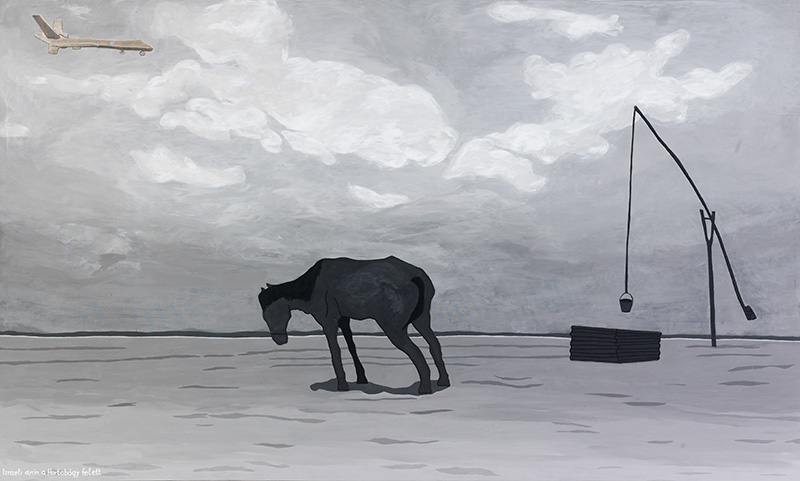
Péter HECKER
Israeli Drone over Hortobágy
2013
painting
acrylic on canvas
114.5x190 cm
I intended this image to be an illustration of the anti-semitic conspiracy theories about the Jewish pursuit for world power (cf. the cursing of bankers or figures like George Soros). The starting point for this painting was János Tornyai’s Rueful Hungarian Fate (Bús magyar sors). The gloomy horse represents the utterly anguished Hungarian nation, unable to rejoice anymore, not even at the sight of a shadoof.* On top of it all, the weather has turned lousy. The enemy is lurking in the sky.
The painting has been inspired by József Szolnoki’s idea.
*shadoof or gémeskút—a type of well typical of the Hungarian plains
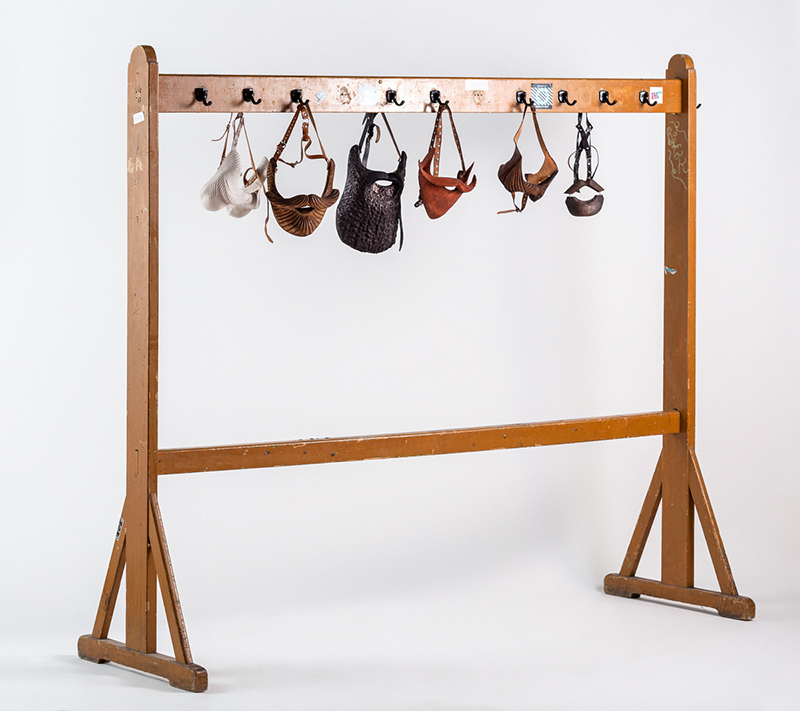
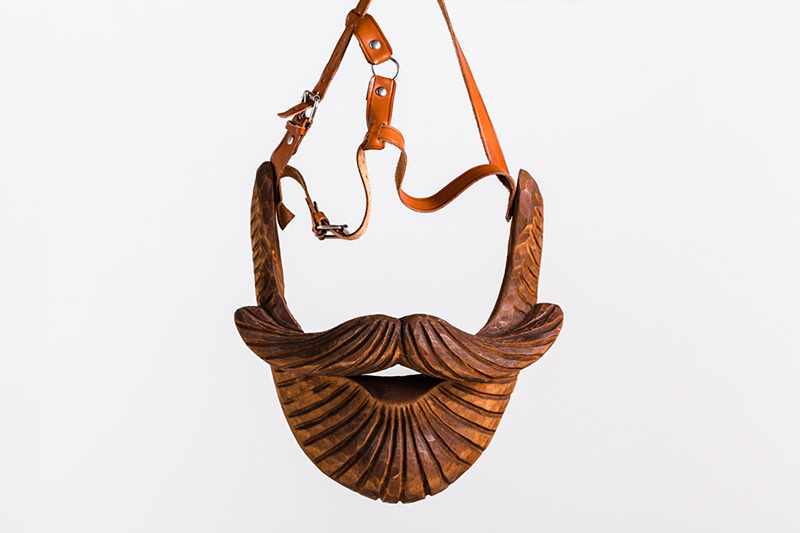
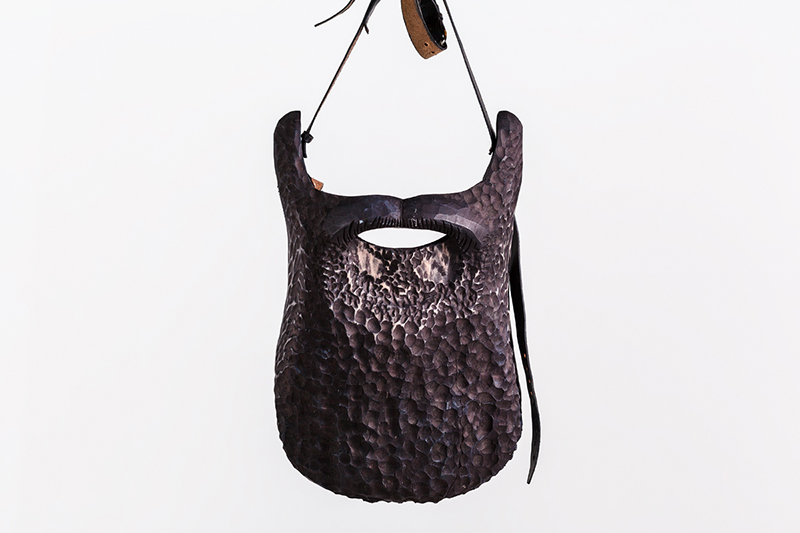
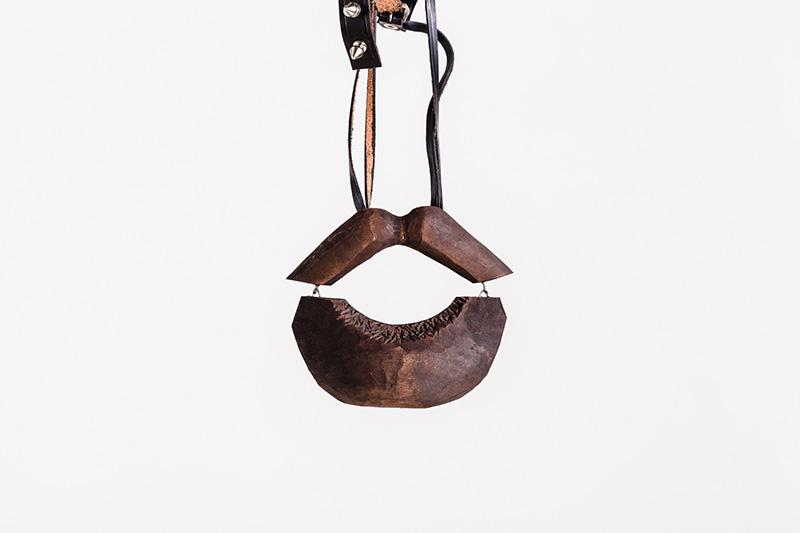
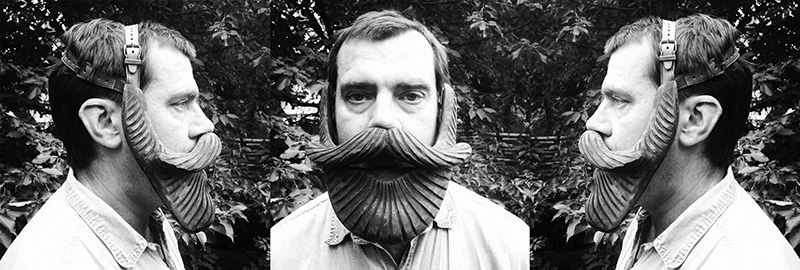
Péter HECKER
Prosthetic Beard
2014
object
wood, leather strap, metal buckle, metal rivet
dimensions variable
According to the Encyclopaedia of Symbols, the beard is an expression of strictness, manliness, unlimited power, and wisdom. In Europe, before the First World War, women did not have the right to vote, were not allowed to attend universities, could not freely choose a career, and were in a subordinate position within the home as well. For my work Prosthetic Beard, I created a wooden replica of the beards of WWI’s most prominent figures (Franz Joseph I, Nicholas II, George V, Nedeljko Čabrinović, and Grigori Yefimovich Rasputin). These dark-tinted, slightly larger than life-sized carved beards can be attached to the face with the help of leather straps. In this sense, they are similar to the prostheses, featured in paintings by the likes of George Grosz and Otto Dix, of the wounded, crippled soldiers who were a recurring sight on the streets of post-WWI Europe.
It was from the horrors of WWI that the Dadaists escaped to peaceful, neutral Switzerland. They had no militant feelings, they did not give a damn about authority or influential people. Among members of the movement, we find both men and women, which made me realize that, apart from a few exceptions, the Dadaists typically did not have beards.
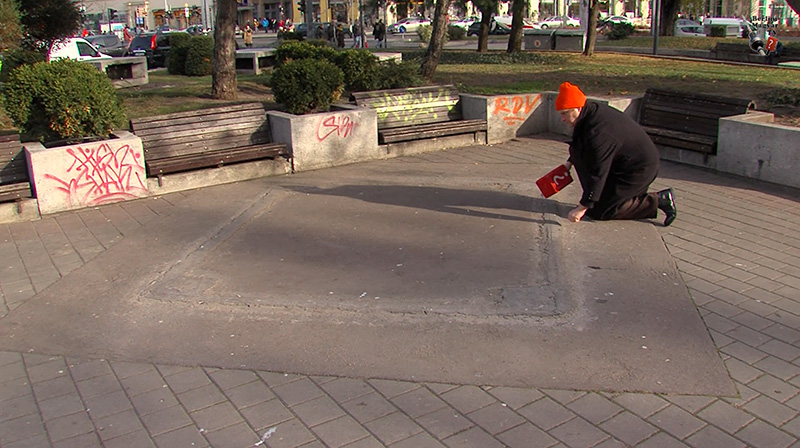
István KOVÁCS
What is good art, what is Dada?
2016
reportage
video
6'31''
Editor, reporter: István KOVÁCS
Camera: Áron NAGY
Creative editing: Máté FILLÉR
As correspondent of the Hungarian television in Berlin, István Kovács has been making reports on events and incidents in Hungary for over 10 years. His main audience is comprised of the inhabitants of the Hungarian Quarter in Berlin. As it is now possible to share film footage online, his reports have become accessible to audiences in Hungary as well. In his videos, Kovács portrays the relation of local to international culture, their characteristics and various points of interaction, thus showing how communication between cultures is enhanced or hindered.
In the episode shot exclusively for this exhibition, Kovács asks passers-by in Budapest about what is good art, who is a good artist, what a good artist makes or paints, what makes good
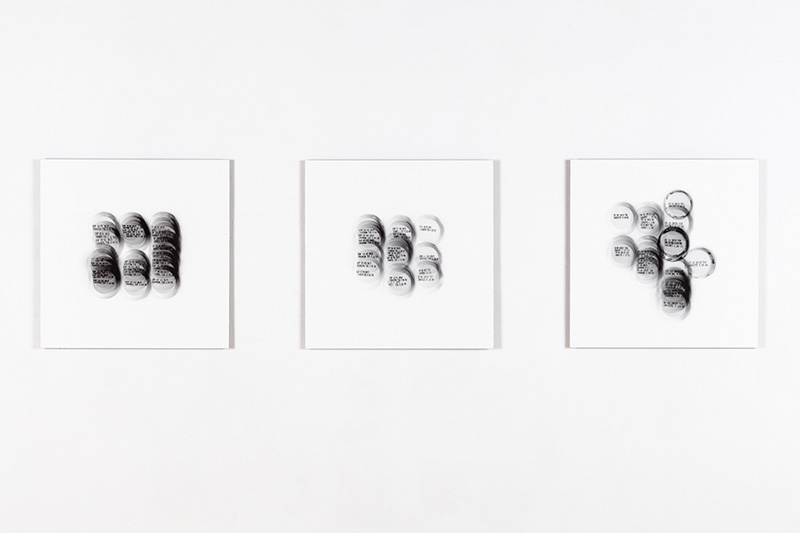
Előd IZSÁK
Expiration Date of Milky Way
2016
digital photomontage
print
40x40 cm each
The work consists of dates layered on top of each other.
They refer to the expiration dates of milk products (categorized by type) I regularly purchased and consumed in the course of a year (2015).
The calendar-like triptychon alludes to the modus operandi of our current consumer society, according to which the survival of this society is limited to certain conditions. These conditions—such as the expiry date of a product—are becoming increasingly determinative these days, acting as important points of orientation in choosing the food products we consume in our lifetime.
Like the Milky Way is comprised of multiple smaller systems, which are thus components and operators of increasingly larger and larger systems, the Earth, our more immediate environment, is also home to smaller societal structures with different values, acting as components and operators of a larger societal whole. The “expiry date”, i.e. the survival, of the parts that make up society is dependent upon that society’s main guiding principle.
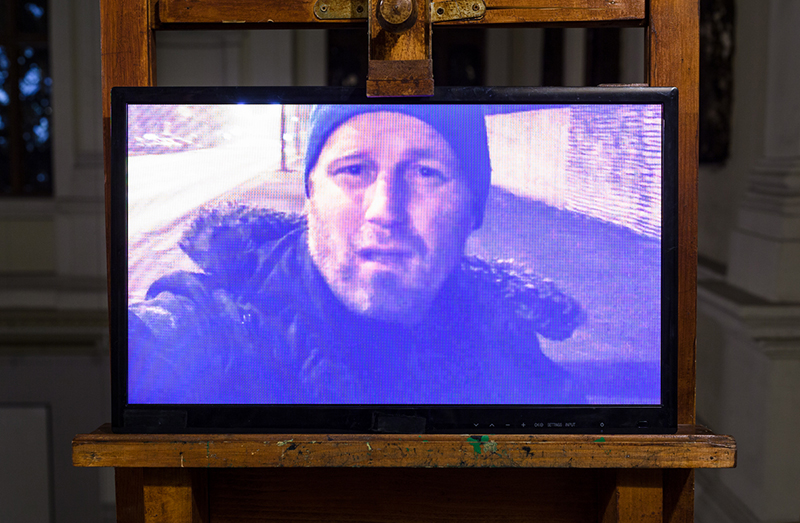
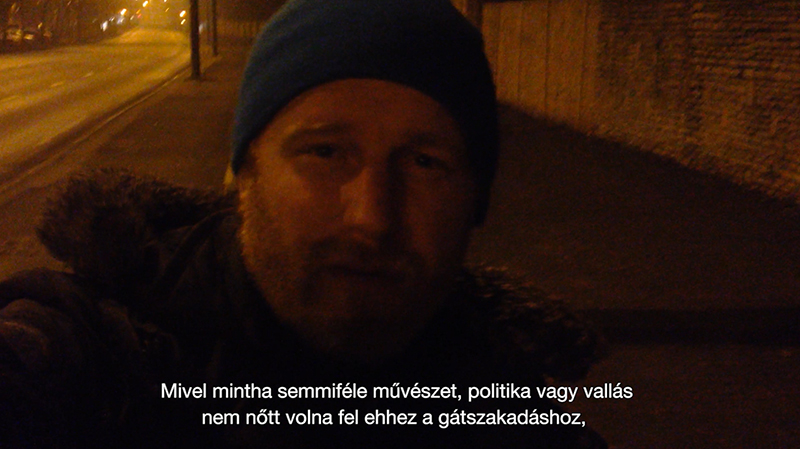
Jivens O. BREEWENSES
Valid
2016
documentary
video
3’05’’
Contributor: Bence CSOBAY
In the video, we hear an excerpt from Hugo BALL’s Flight Out of Time
Translated by Eugene JOLAS
Jivens O. BREEWENSES, the internationally acclaimed ethologist and ethnologist professor, researches urban lifestyles. The Professor, who is also the creator and presenter of On the Paths of the Concrete Jungle, first published this video on his Facebook page, where he regularly updates his followers on the details of his research and the depths of his scientific experiences. The Professor was delighted to make the video available for the current exhibition.

Jivens O. BREEWENSES
Jivens’ Tales
2015
collection of tales
video
3'59''
Narrated and directed by Jivens O. BREEWENSES
Jivens O. Breewenses, the internationally acclaimed ethologist and ethnologist professor, researcher of urban lifestyles, and creator of the series On the Paths of the Concrete Jungle, is also a collector of urban tales. In the current exhibition, he narrates his favorite tale from the concrete jungle in his mother tongue.
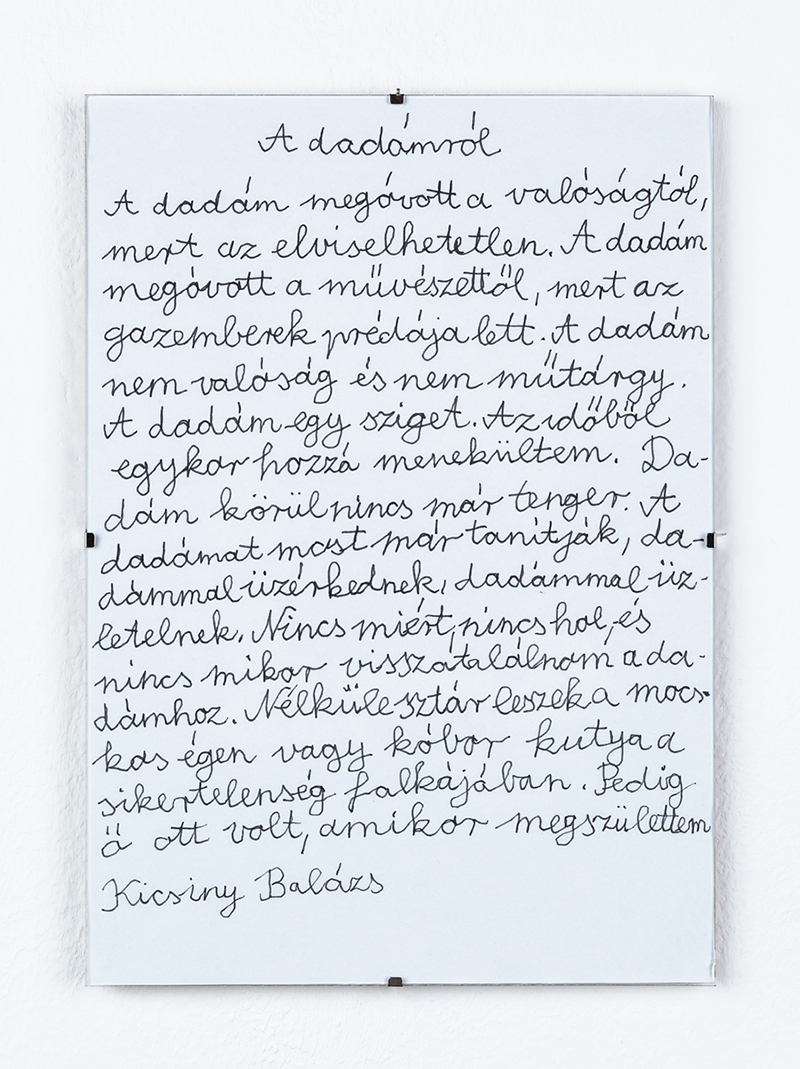
Balázs KICSINY
About My Dada
2016
handwritten text
ink on paper
21x30 cm
My Dada protected me from reality, because it was unbearable. My Dada protected me from art, because it became the prey of bastards. My Dada is neither real, nor art. My Dada is an island. Once upon a time, it is to her that I escaped from time. There is no sea around her anymore. Now, they are teaching my Dada, they are profiteering from my Dada, they are dealing with my Dada. There is no reason, no place, no time to find my way back to my Dada. Without her, I will be a star on the filthy sky or a stray dog in the flock of the unsuccessful. She was there with me, however, when I was born.
Balázs Kicsiny
Translated by Karina Horitz
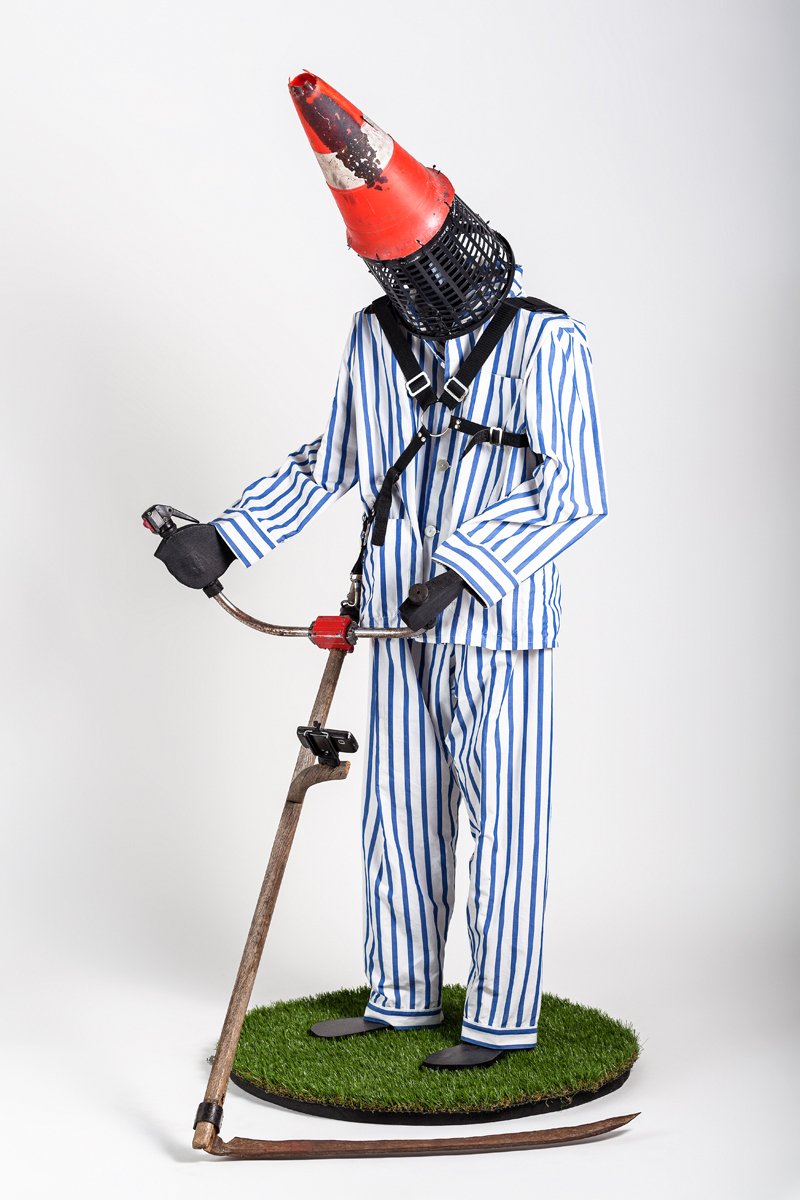
Balázs KICSINY
Opportunist Revolutionary
2016
installation
pyjamas, traffic cone, rubbish bin, selfie stick, handheld scythe, motorized handheld scythe, harness, astroturf, wooden structure
80x170x100 cm
In 1987, I went to find Franz Kafka’s grave in the New Jewish Cemetery in Prague. I saw a strimmer at work right next to the grave. Never before have I seen such a technique for cutting grass. In my confusion, I first thought that it was the Kafkaesque spirit—still taboo in the Czechoslovakia of the time—that materialized in front of me in a way I could not grasp. This memory often comes to my mind at the sight of laborers* cutting grass by the side of the road. And their sight, in turn, makes me wonder who the contemporary artist really is. The Opportunist Revolutionary is neither human, nor sculpture. If it wasn’t for its objectified nature, this figure, frozen in action, would be considering ways of self-elimination.
*Kicsiny here alludes to workfare, a system characteristic of contemporary Hungary.
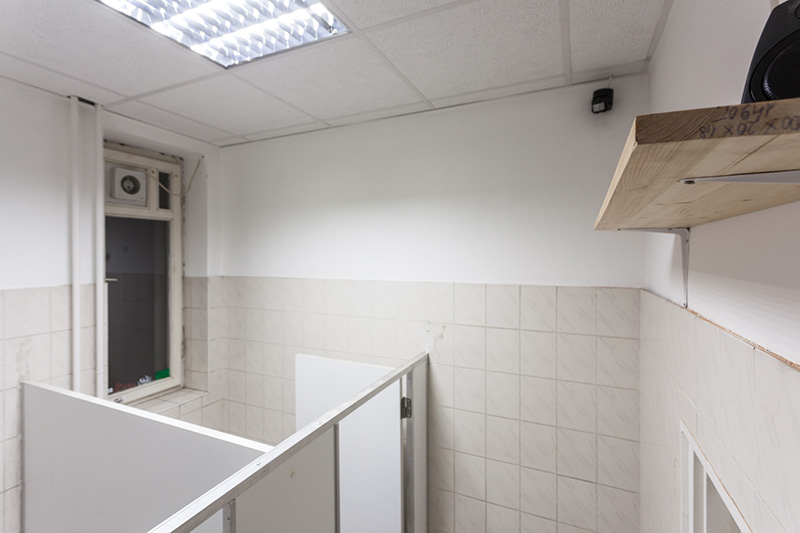
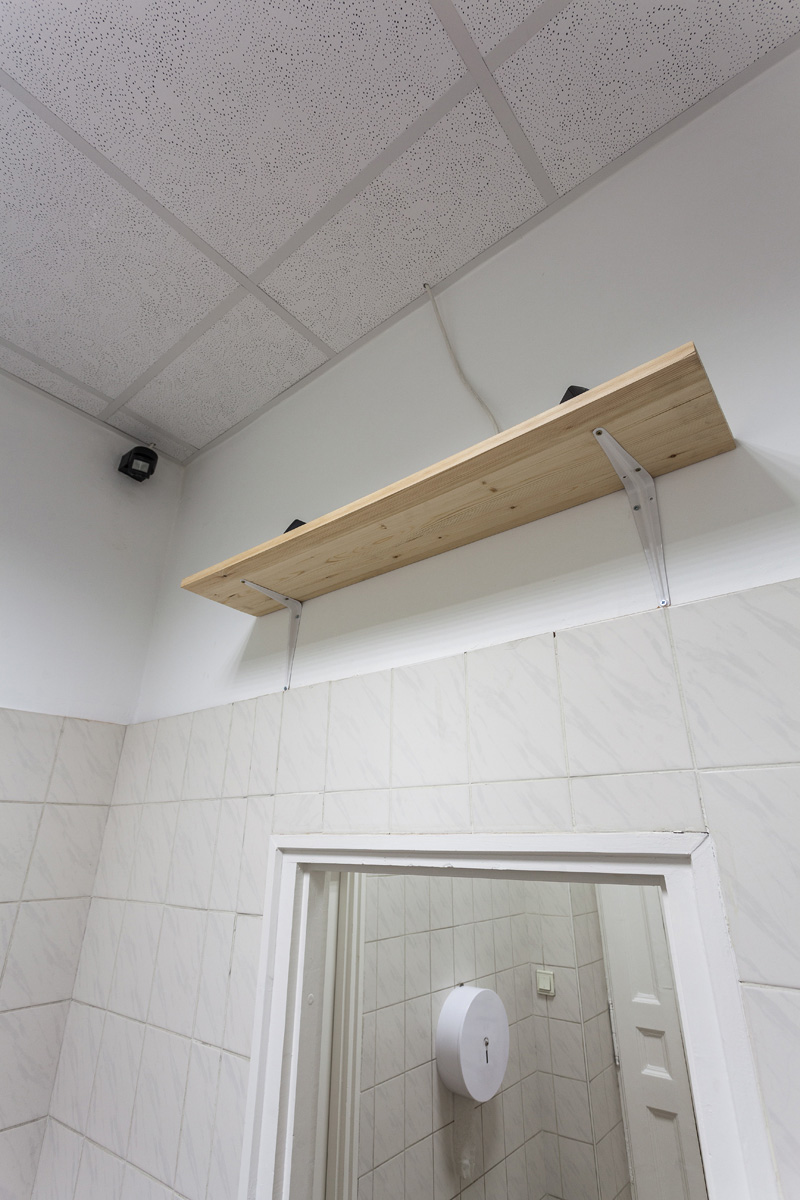
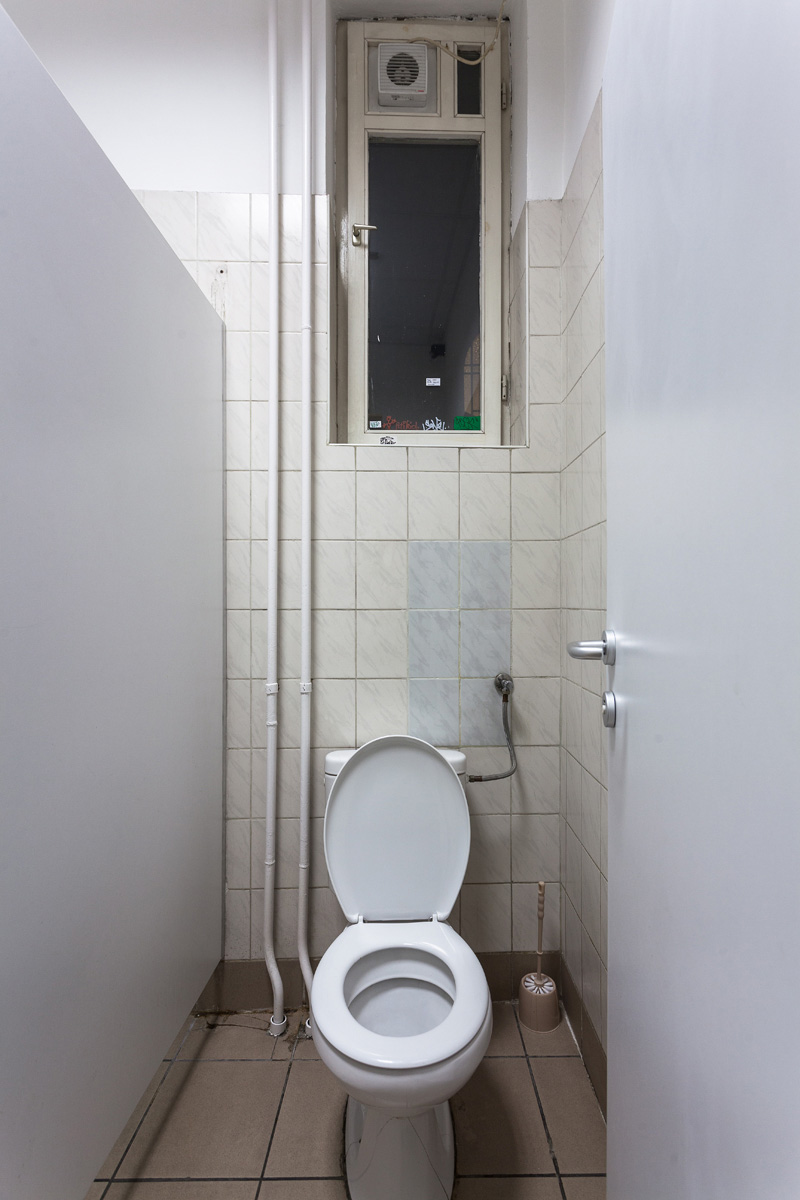
Margit KOLLER
Lichthof Symphony No.17
2016
site specific sound installation
mp3 file
mérhetetlen
sounds gushing down the fake plughole
flushing down the sound-image of the toilet’s shadow
I would shut up the crying echo of the babyinfant
torn away the whistling phone cord is mute
in the sizzling of fake and bygone fried eggs
catching some kind of age of the human presence
the voyeur soundthief’s stimulus-treshold-stumbler
and the „already long-passed humans’ recorded laughters”
flight of stairs’ curse is the must of talking to each other
- Just having a quarrel, what a pleasure!
Dasein escaped through the lichthof
tion-zation-nization-dehumanization!!!
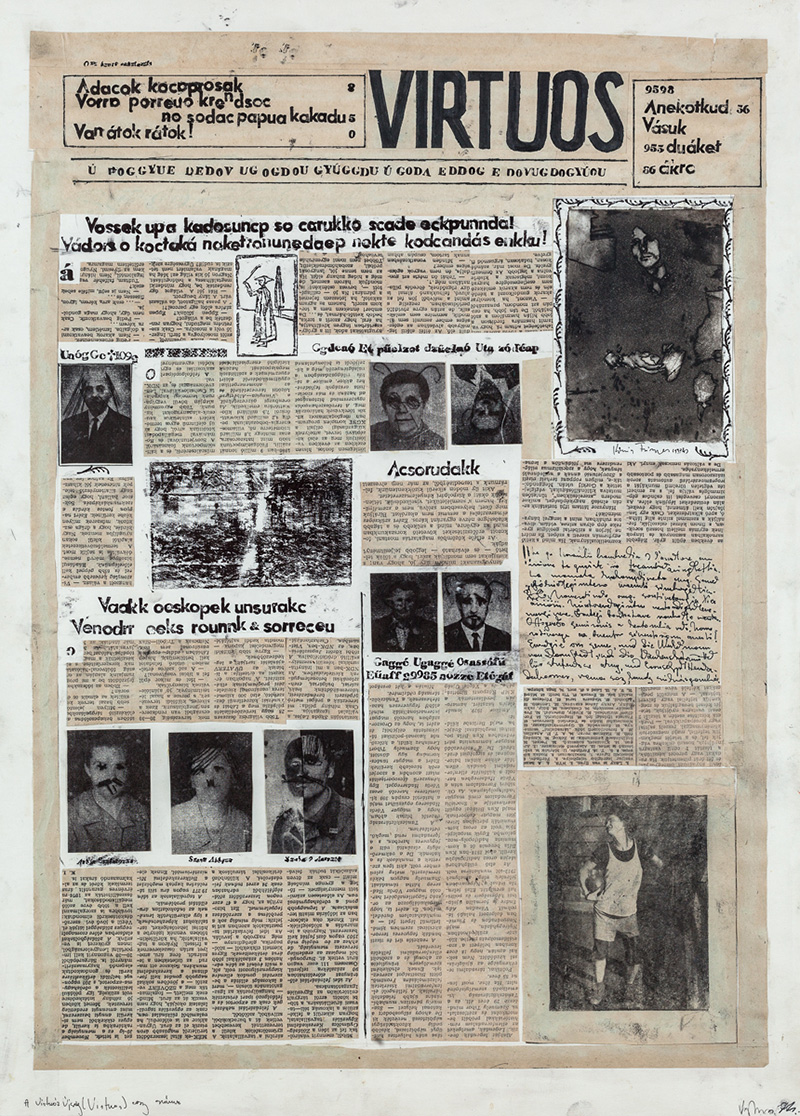
Frigyes KŐNIG
Virtuos
1974
collage
collage, paper
50x70 cm
The work was made in 1974. At the time, I was working as an assistant at the Fejér County Printing Corporation’s zincography workshop. I often took part in the making of the Fejér County Newspaper. This work was technical; I had no influence on the content of the paper. The Virtuos aimed to counteract this tension.
Frigyes Kőnig
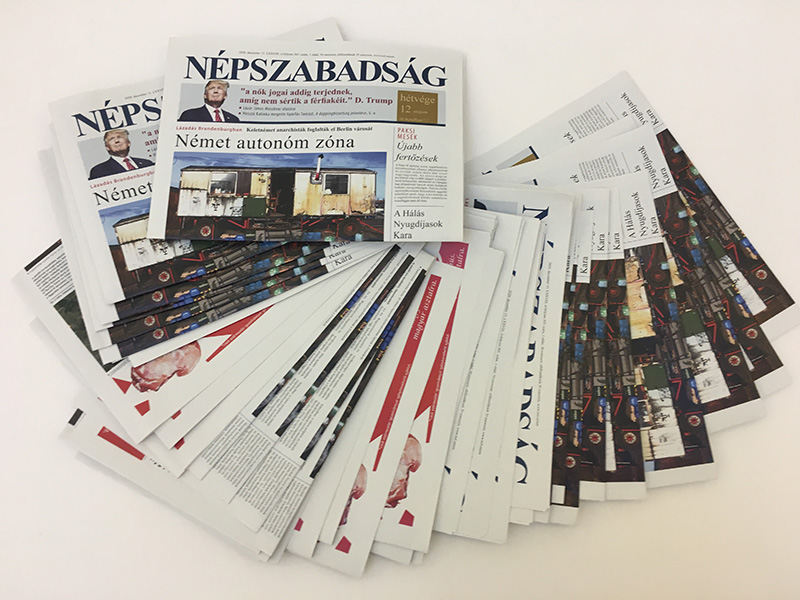
Juli LACZKÓ
Berlin – Freie Stadt 2020
Looking at the Present from the Future – Dada News
2016
fanzine
print, newsgripper
25x35 cm
In 2020, Trump’s America and Merkel’s Europe are at war with Putin’s Russia, but in the moment of German intervention, an extremist anarchist revolt erupts in Berlin. The punks take over from the moderates, the city breaks away from the Bundesrepublik, and turns into a radical, free-spirited community with no central governance. Berlin—Freie Stadt 2020 shows this future historical moment in the form of a daily newspaper, available both digitally and in printed format.
In 2016, Berlin is home to a number of excessively nonconformist, off-grid lifestyles, dispersed throughout the city, ranging from closed anarchist spaces through house projects to festival-like trailer caravans. I started documenting these settlements from two perspectives: Google Maps location, with the help of Street View, validates my documentary photographs from the scene.
The work Berlin—Freie Stadt 2020 is a fictitious newspaper with a contemporary look, available in both printed and digital format. The articles feature my own photographs alongside Google Street View images of the same location, placing the paper’s content somewhere between fiction and reality.
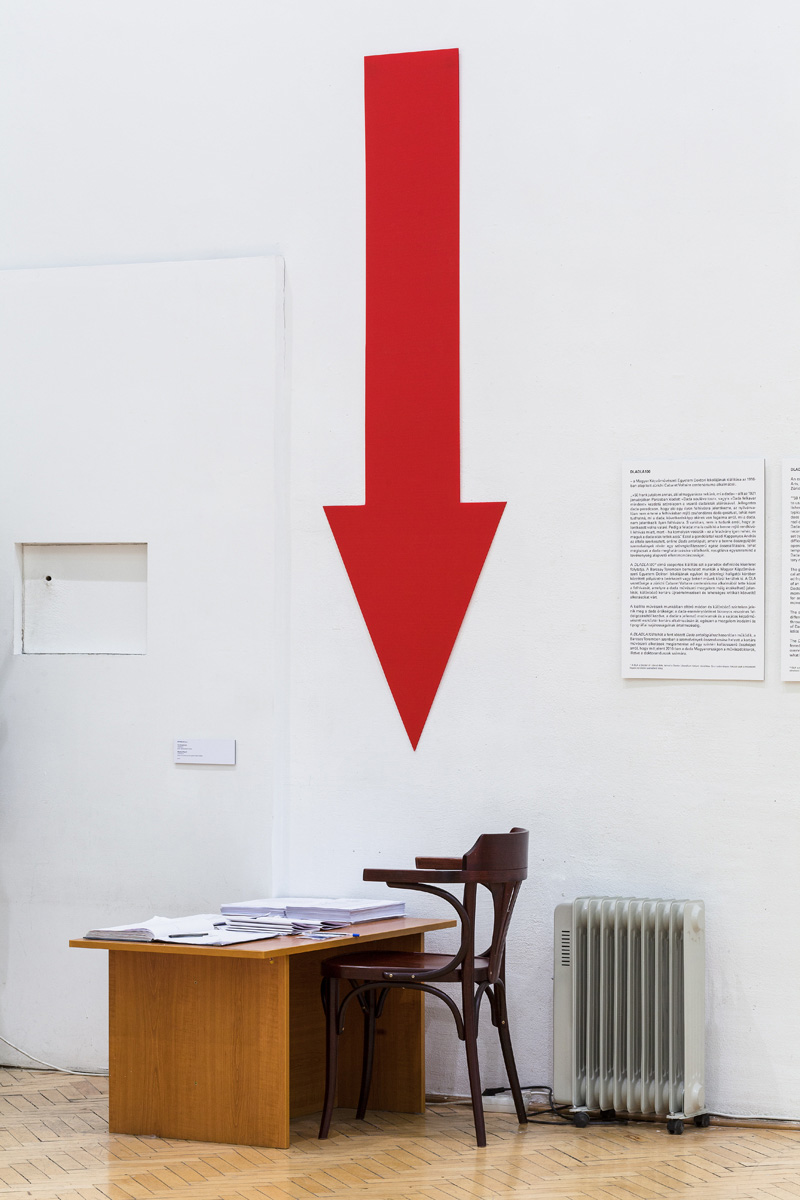
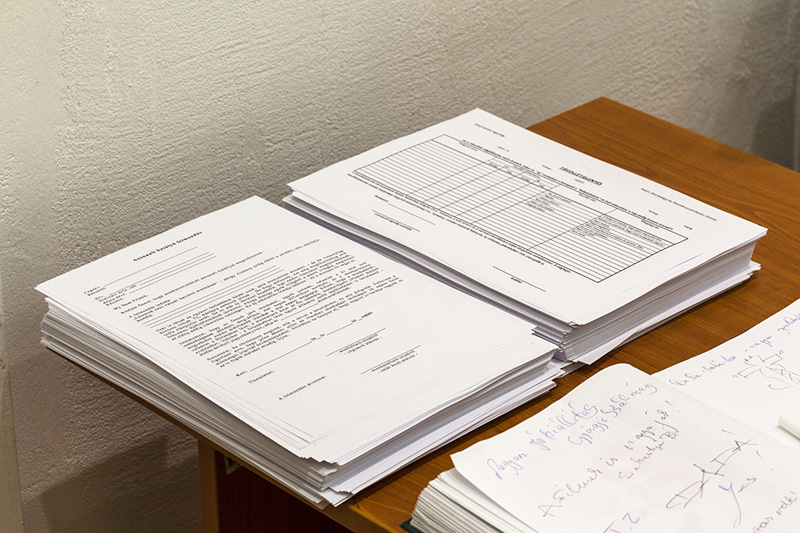
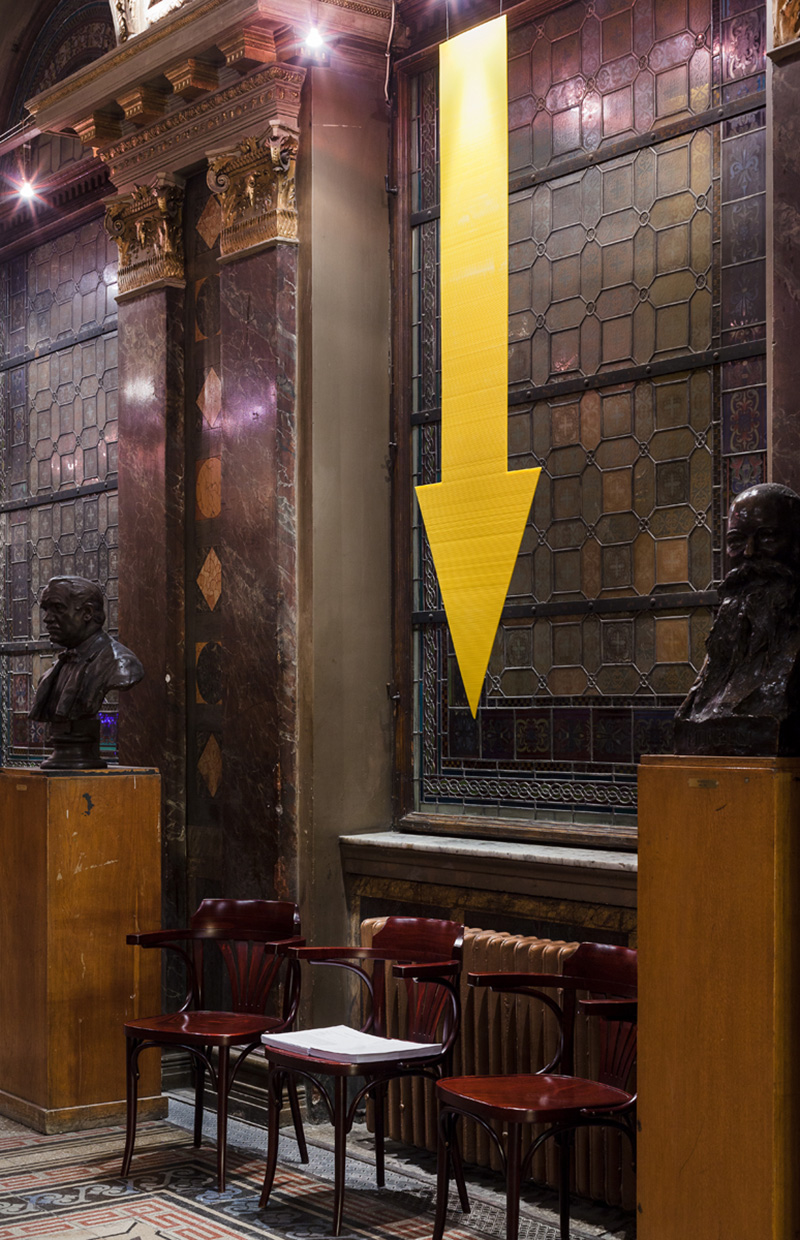
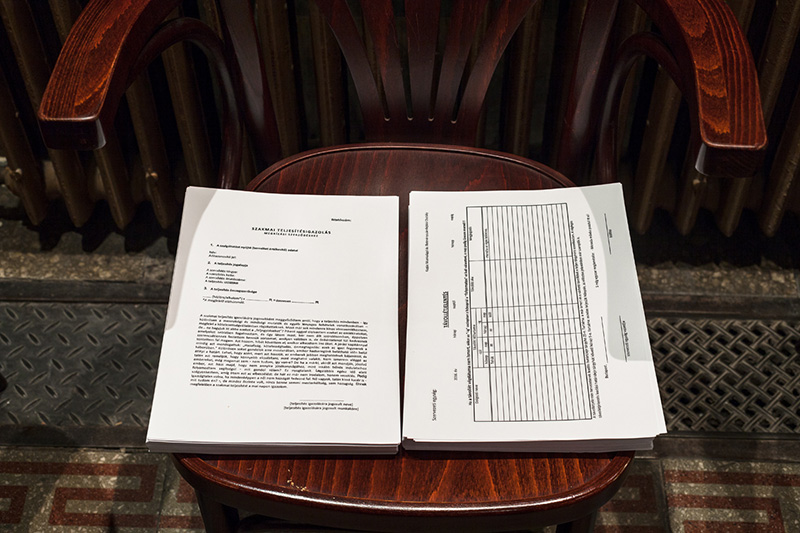
Anna PETERNÁK
Absence Report
2016
installation
black and white prints, plastic board sheets
dimensions variable
The Absence Report is basically an everyday object, let’s say an official document: in its original function, it is meant to relay information to those capable of decoding its semiology. It reports on people who are absent. It is issued on a monthly basis. Failing to prepare the document entails a number of warnings, followed by reprimands. Although the Absence Report might look modest and reserved at first sight, it actually contains sophisticated messages of literary profundity. Until now, the Absence Report operated only under limited institutional circumstances, its single journey leading from “issuer” to the HR office. It therefore had no chance to flourish or to reach a wide enough audience. But we shall change this. In its new function (as a work of art), it will finally fulfil the role it is cut out for.
We encourage everybody to approach the Absence Report as s/he would approach a work by Jókai, Dickens, Defoe, or Beckett. And if you liked it, please repeat the same procedure with the Professional Fulfillment Certificate and the Immediate Dismissal Notice.
Letölthető dokumentumok
01_Azonnali_hatalyu_felmondas.pdf
01_Tavolletjelentes.pdf
01_Teljesitesigazolas.pdf
02_Azonnali_hatalyu_felmondas.pdf
02_Tavolletjelentes.pdf
02_Teljesitesigazolas.pdf
03_Azonnali_hatalyu_felmondas.pdf
03_Tavolletjelentes.pdf
03_Teljesitesigazolas.pdf
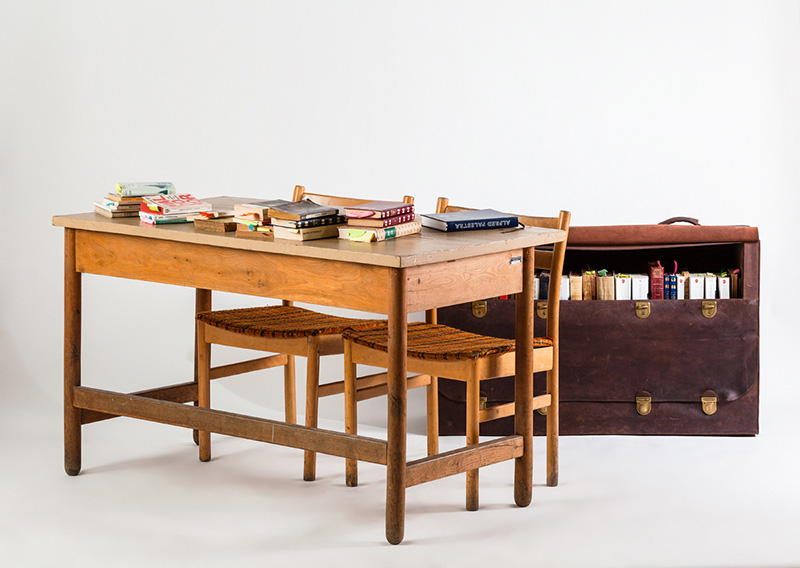
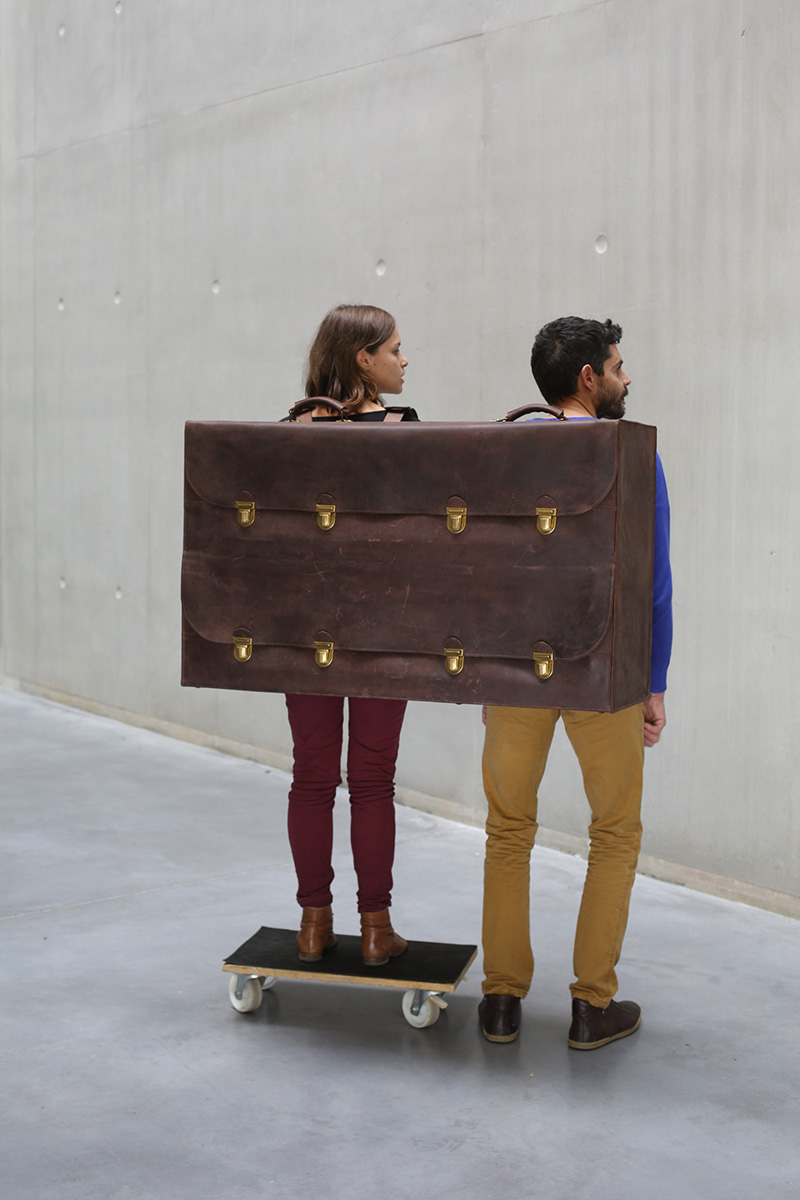
Katarina ŠEVIĆ & TEHNIKA SCHWEIZ (Gergely LÁSZLÓ & Péter RÁKOSI)
ALFRED PALESTRA
2014 - 2015
installation
leather bag, books, Alfred Palestra book
100x60x40 cm, dimensions variable
At the end of the 19th Century a school in Rennes (France), today referred to as the Lycée Émile Zola, became a point of intersection of two historical tendencies: the birth of the avant-garde – through the presence of Alfred Jarry as a pupil – and the crisis of the Republic – through the 2nd Dreyfus Trial that took place there.
Was it a mere accident that the creation of Jarry’s King Ubu, which is commonly referred to as precursor of Dada and Surrealism, the forerunner of the avant-garde, coincided with the culmination of the Dreyfus Affair in time and space? It is this concomitance that the project reflects on.
The complex project was realised with the participation of the schools’ student drama circle, in the gym, which once served as the location of the trial. The aim of the work conducted with the students was to confront participants – through the persons of the two Alfreds – with the ghosts of the place and the era and the meaningful heritage of the school. At the workshop, the artists and the students partook in an exercise of interpreting excerpts from texts of two parallel literary canons: the books of Alfred Dreyfus, which he read between 1895 and 1898, during his imprisonment on Devil’s Island, and Jarry’s library – a collection of the 27 books that appear in one of his one of his most important works, the Exploits and Opinions of Dr. Faustroll, Pataphysician.
About 20 different costumes and symbolic, moving wooden objects, were created for the performance and the workshop.
In the DLADLA 100 exhibition, Alfred Palestra’s School Bag and books belonging to the Alfred Palestra Canon are displayed, among the Alfred Palestra Book – a printed manifestation of the project.
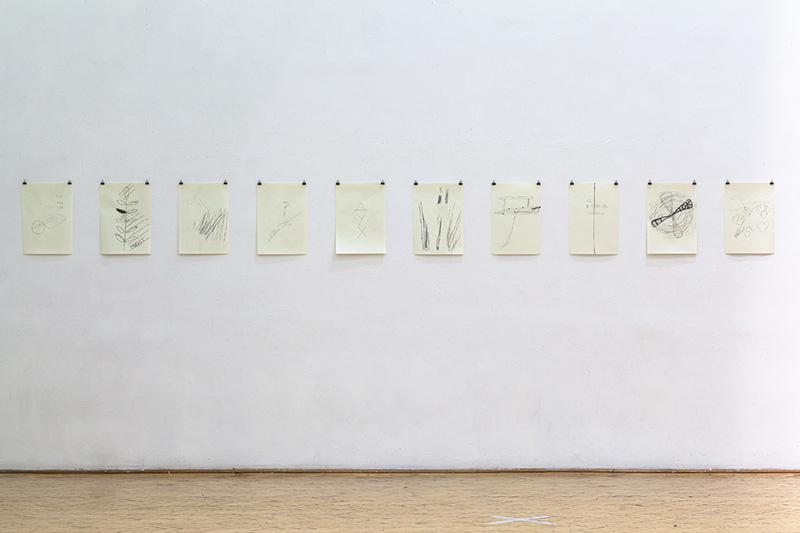
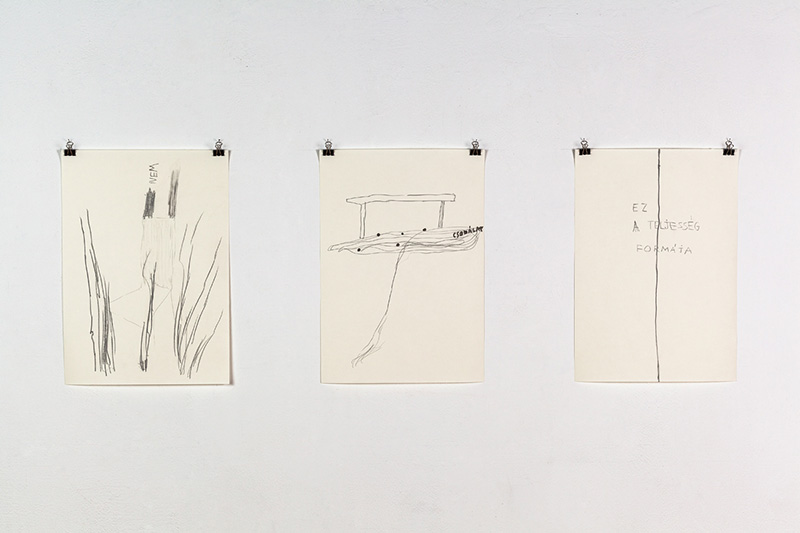
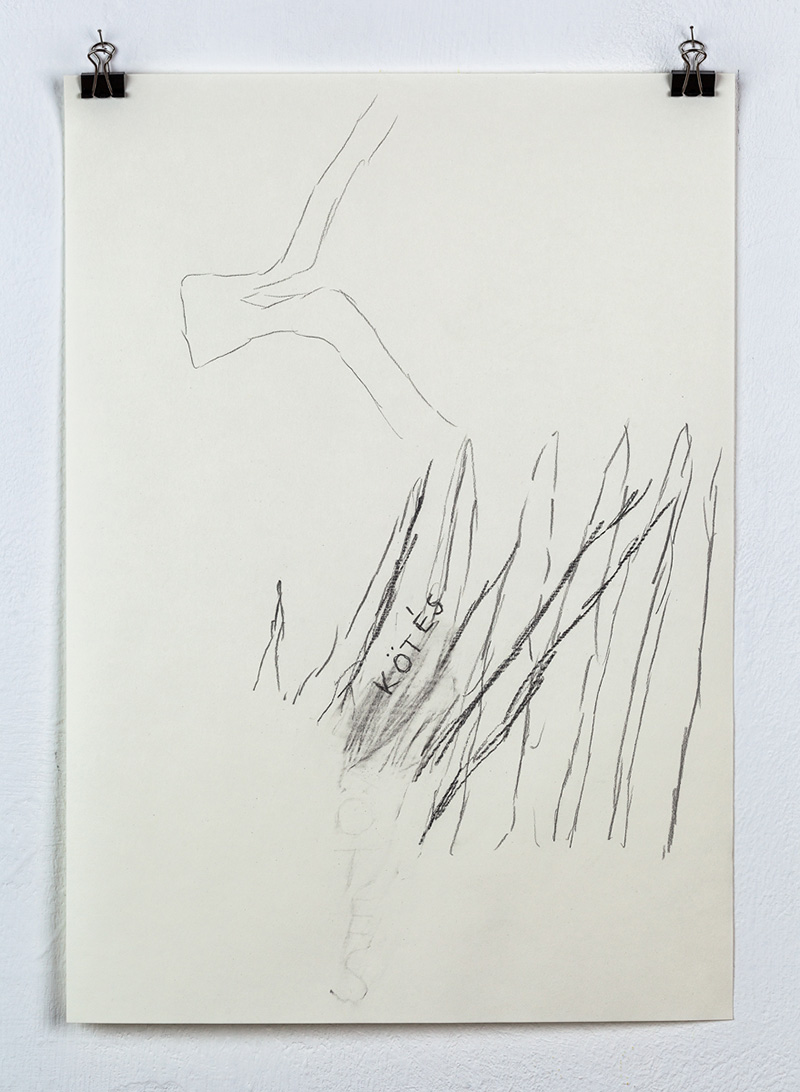
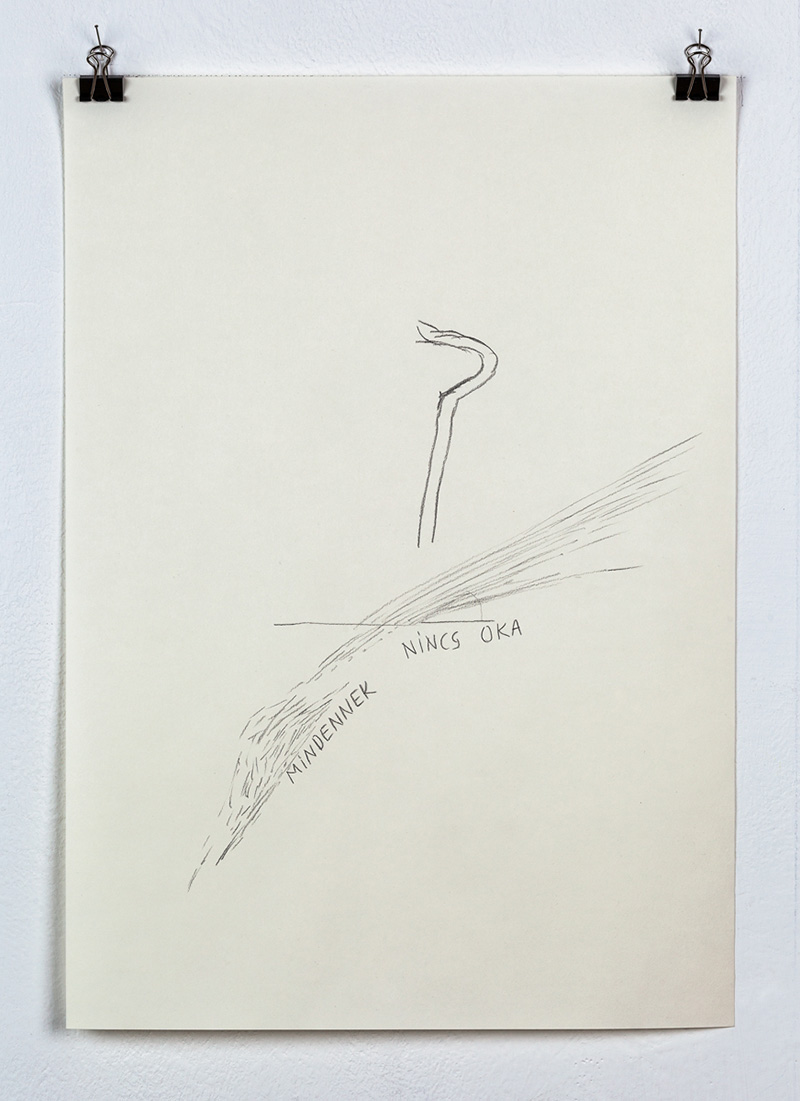
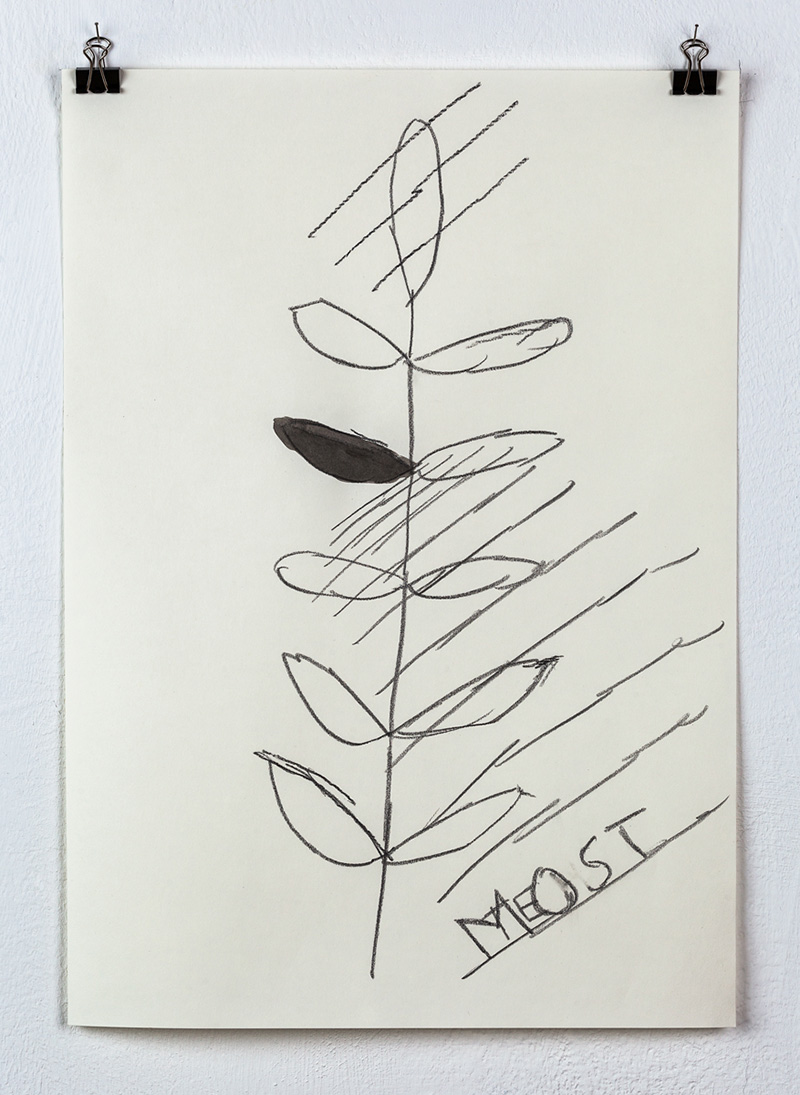
Lellé SZELLEY
Extract I-V.
2016
drawing
pencil on paper
29x42 cm each
By the fact that these texts that do not back the figures on the pictures even so get along with the works and together they form a whole, this poetry-description juxtaposed with the images corroborates and confirms the concept. It may be considered DADA in a rather gratuitous way.
Limestone pieces
But it is not
Two green leaves
Two calyxes
Slower than it takes to utter
Resolved
28/09/2016 04/10/2016
Chance
The sound
Of the aircraft taking off
Reaches into my dive
The rooster’s howl
Shears the darkness
Stones are swimming
Up
16/09/2016
Fate
From this moment on
It eases
In the perceptible world
It relents
By a simple glance
It lifts
With notorious hope
It stretches
With echoing regard
It unbinds
15/11/2016
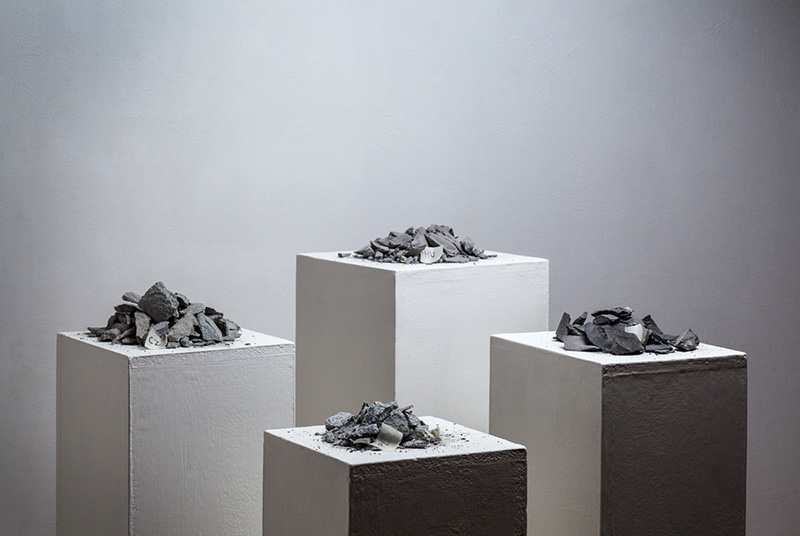
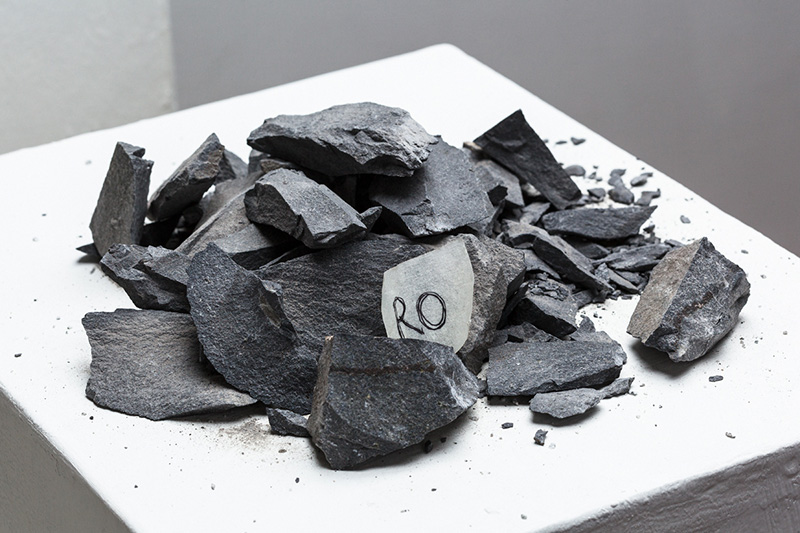
Kornél SZILÁGYI & Csaba VÁNDOR
“Cobblestones: weapon of the people!” - Oppression Test
2012
installation
video, cobblestone rubble
dimensions variable
Two artist-researchers collected cobblestones from the streets of four Central-East European cities, then had a pressure test performed on them in the laboratory of the Budapest University of Technology. The test’s results show that Hungarian cobblestones are much better at enduring pressure than the others. It seems like a fairly obvious conclusion that Hungarian people are by far the best at enduring oppression.
“You can chop wood on a Hungarian’s back”*
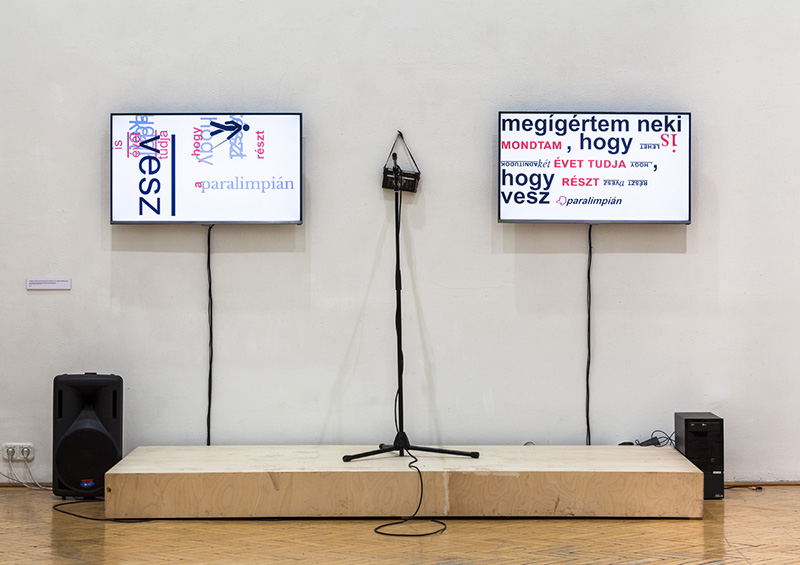
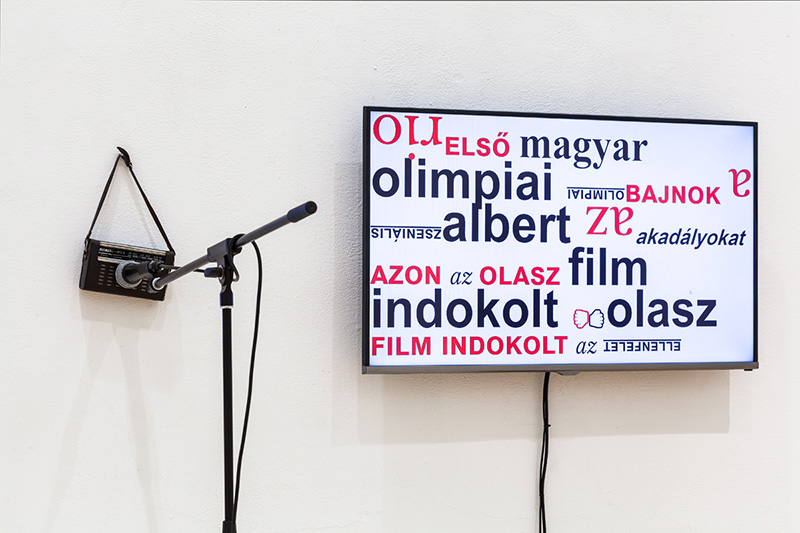
Márton FERNEZELYI & András KAPPANYOS & Imre LEPSÉNYI & Zoltán SZEGEDY-MASZÁK
Instant Phono-Visual Poetrizator (Pseudo-Chaotic Dadamaton)
2016
Pseudo-Chaotic Dadamaton
dimensions variable
This work reinterprets the tradition of Dadaist image poetry and “free” typography in an interactive form. It is inspired by the way such Dadaist works (usually ephemeral in nature, intended for leaflets or newspapers) attempted to illustrate or “transcribe” the emotional dynamics of oral presentation, using methods developed by the Futurist tradition of parole liberta. Instant Phono-Visual Poetrizator is based on digital speech recognition: it identifies words or speech fragments uttered nearby, and turns them into typographic signs. Depending on the way the identified word sounds, an algorithm pairs it up with a matching typographic pattern and displays it on the screen. The words are deposed on top of each other, forming a dynamic image poem (a visual verse, a poetry film) that is constantly changing in time, yet in each moment, it is offering itself for visual and verbal perception simultaneously. Perception is further enriched and contextualized by the acoustic memory of the original utterance and the comical tension resulting from imperfect speech recognition.
The conceptual roots of Dada go back to the experience of WWI, especially to the propaganda that robbed words (and with them, the moral principles of human culture) of their meaning.
Hugo Ball’s sound-poems point out the inflation of expression by introducing new, previously nonexistent words, a new, “pure” form of verbal currency. We refer to this heroic gesture in our choice of Kossuth Rádio’s* live broadcast as the Phono-Visual Poetrizator’s default input.
*the primary government-controlled news channel of Hungary
Márton Fernezelyi & András Kappanyos & Zoltán Szegedy-Maszák

Zsuzsa SZTRUHÁR
Musica Taverna („Buffetmuzik”)
2016
installation
iron, glass, acrylic paint, industrial fan, singer motor, plexyglass, copper, plastic
60x60x120 cm
This playful, bohemian work was made for the Hermina Gallery’s first birthday, in May. Beer bottles, sounded by a transformed central fan, go round and round on a plexiglass. The plexi is moved by a foot-controlled sewing machine engine with the help of a v-belt pulley. The beer bottles’ sound, roughly a quint or an octave in range, can be modified by adjusting the water level in the bottles. When the plexi is moved, a faint musical scale can be heard. The color scheme and mood of the work somewhat recalls the French riviera, where, in certain orangeries, Duchamp and the others probably had a great time relaxing and “dandying about”.
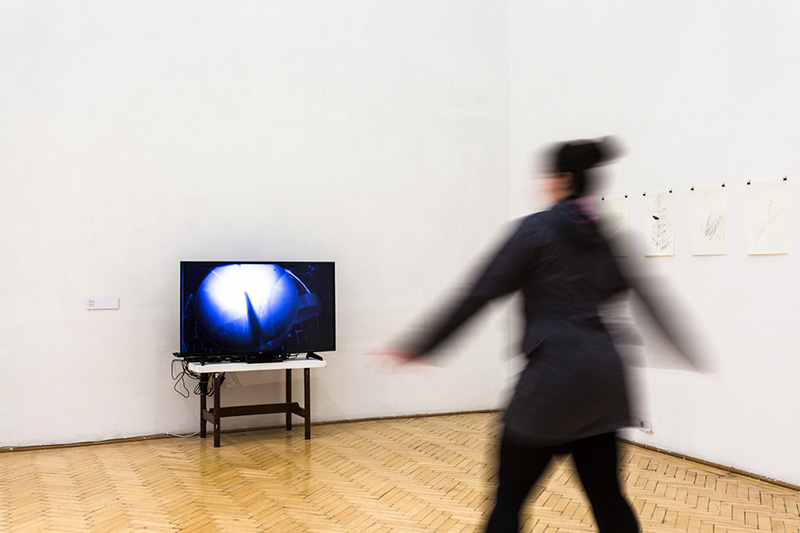
Edit TANGL
DADA Central
2016
video installation
video, Kinect sensor
dimensions variable
A play with shabby debris, a play with film. Where does it begin? Where does it end? Does it have an ending at all? Or a beginning? This work cannot be grasped from one position, you have to keep jumping and fussing in front of it, fanning it, and then it will react to you. But where do you actually get to? That is never certain. Forwards or backwards, it is only up to you what story you will receive.
With the help of a Kinect sensor, we can assemble scenes reminiscent of Dadaist films, in a totally undetermined and illogical sequence. We can create our own Dada film with the movement of our hands and feet. There are no right answers; the toolkit of scenes and movements is to be discovered. The work’s title refers to a popular Kinect game.
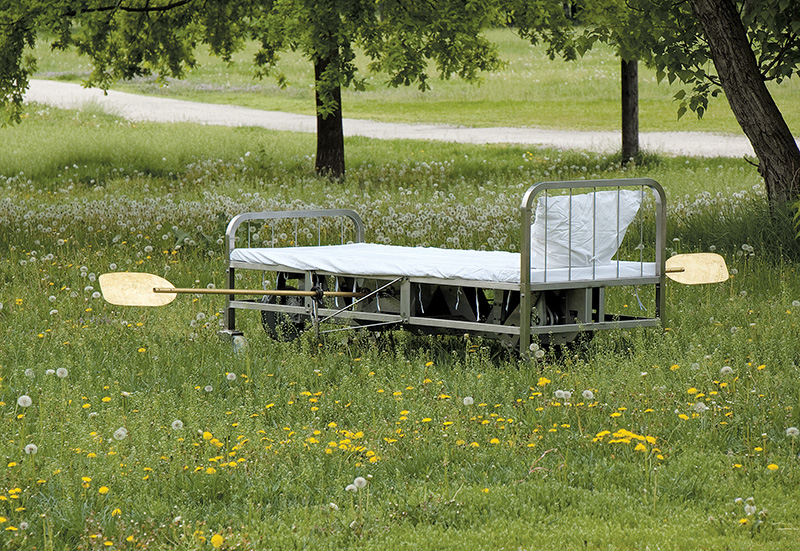
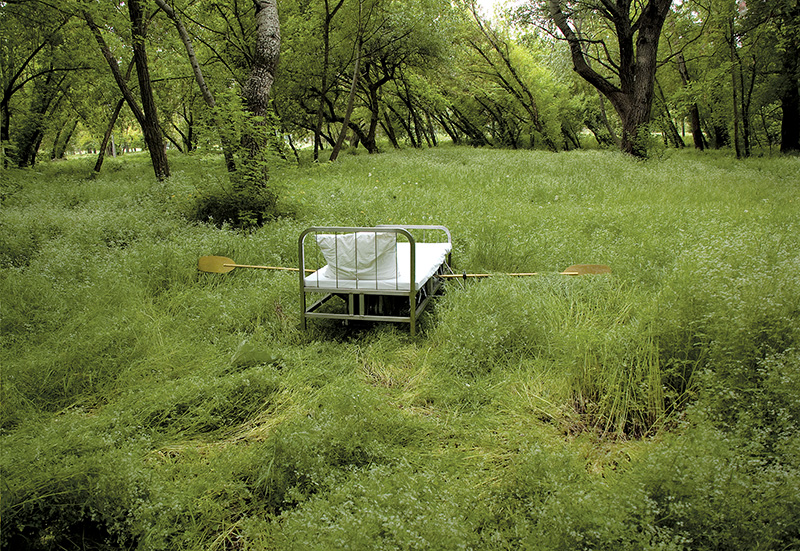
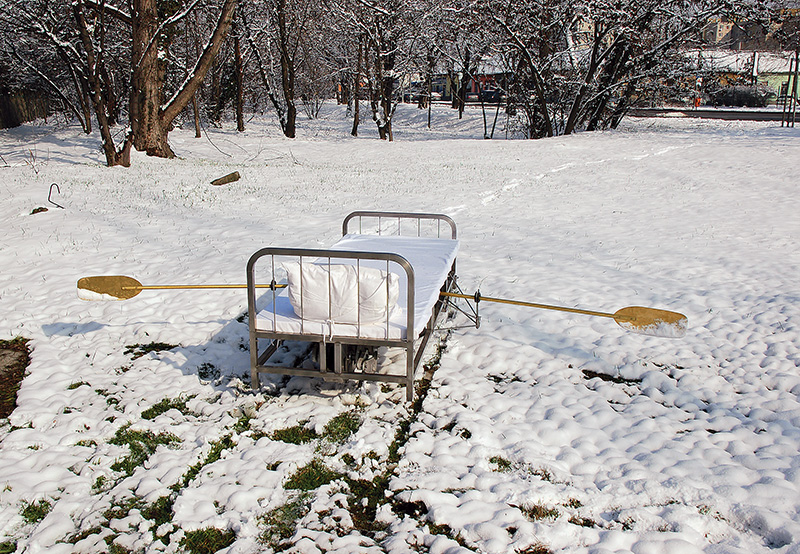
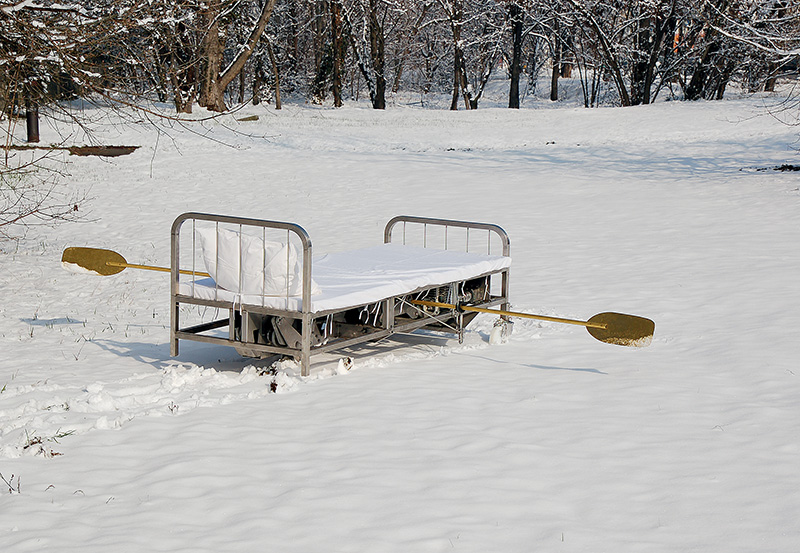
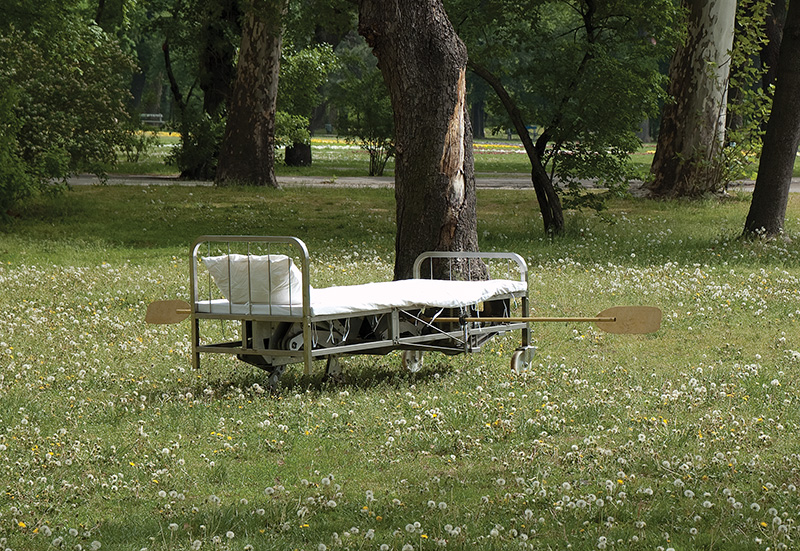
József TASNÁDI
The Visitor 1-3
2013
video documentation of the kinetic installation titled The Visitor
video
The Visitor 1 (1’55’’)
The Visitor 2 (2’18’’)
The Visitor 3 (1’49’’)
Concept: József TASNÁDI (2011)
Planning: József TASNÁDI (2011) & BIMATIK Ltd. (2012)
Contractor: BIMATIK Ltd. & Terézia TASNÁDI (2012)
Location: Csepel Island, Óbuda Island, Heroes’ Square, City Park; Budapest, Hungary
Date: February-May 2013
Camera: Zsolt BREDÁR
Music: The Visitor 1 – Erik SATIE: Gymnopedie 1, The Visitor 2 – Erik SATIE: Gymnopedie 3, The Visitor 3 – Erik SATIE: Gnossienne 1
Is it only possible to make images in a static position? Is it only by making a stop that I allow myself to see consciously?
Movement is not image-friendly. Still, perception of reality mostly occurs in movement. I perceive the moving world while I am moving. I perceive it mostly inaccurately. In such inaccuracy, the scene is much more atmospheric than visual. Still, the image does have an atmosphere. So does movement. Nevertheless, movement is not image-friendly.
When I make a stop to contemplate, reality offers itself to me largely as an image, even though the image is only one dimension of reality. The image is but a fragment of reality.
The fragment is able neither to carry, nor to mediate the atmosphere of a moment. The image never shows reality—yet, it as though it invoked the atmosphere of reality.
The Visitor is the story of my pilgrimage towards my centre. An irrational and happy excursion that only has a reason (motive) but no explanation. An adventure in which fiction and invention, romanticism and humor mix with the tragicomedy of my defenselessness in front of myself. A cluster of subtle references to the dauntless obsession of Fitzcarraldo, to Ulysses, and to the ‘visitadoras‘ of Vargas Llosa. To those lacks that fuel our incessant desire for transcendence. It is an autobiographical installation-performance in which my proxy is a bed.
József Tasnádi
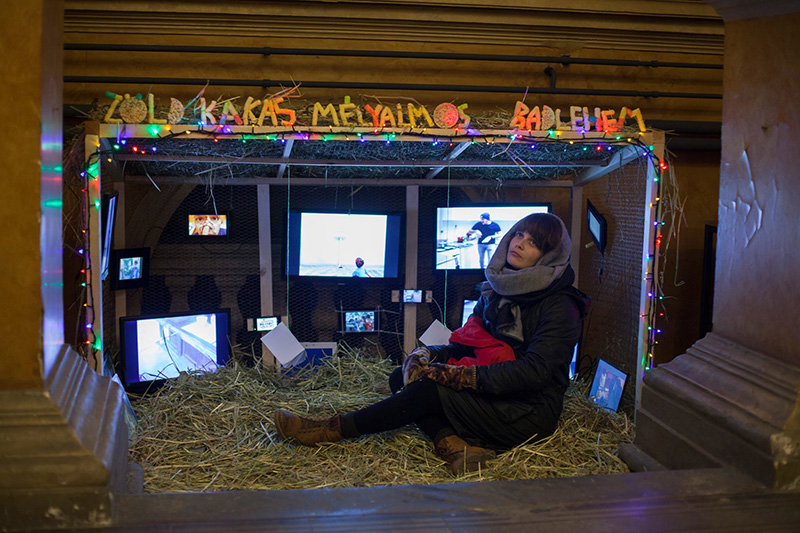
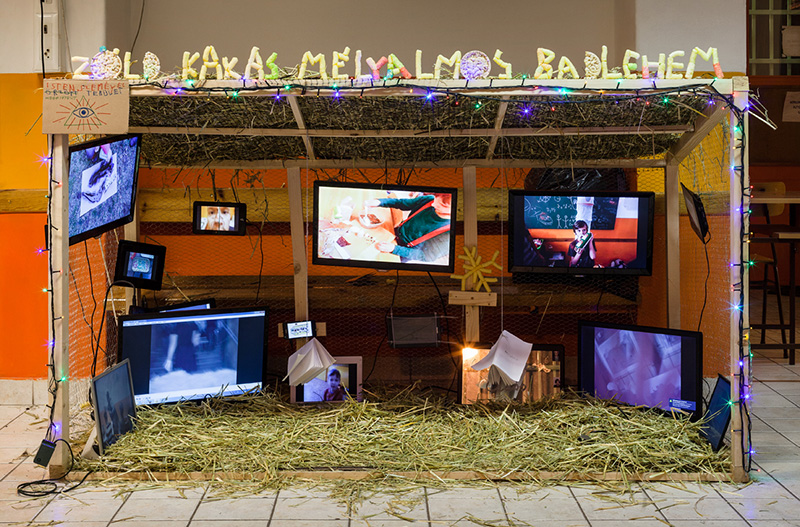
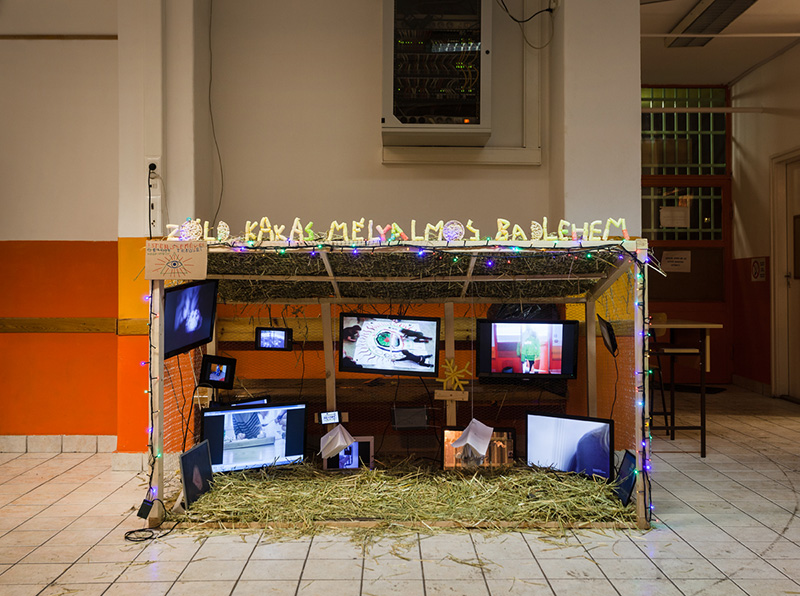
K.U.T.A.Cs. (Kivezető Utak Tapasztalatain Alapuló Csoport; Miklós MÉCS & Csaba VÁNDOR)* & VirágJudit Galeri (Virág BOGYÓ & Judit FISCHER)
Huff Huff Time
2016
installation
photos, videos, objects, texts
dimensions variable
* K.U.T.A.Cs. (Group Based on the Experience of Egresses)
The acronym means “fontanelle” in Hungarian
The Green Cock Lyceum is a school for kids who can’t tolerate conventional educational institutions and are not tolerated by them either.
Already at the age of six, they are defying society.
Last year, a primary school class was also launched, with a single student and eight to ten non-teachers.
We don’t teach classes, we simply just spend time together like we “normally” would.
These kids are used to being the rebels, but in a school which is itself rebellious, this becomes a bit more difficult.
Our aim is to convince everyone that there’s always something to revolt against. If we’re done with teachers, we can take down the doctrines.
This year, we have three kids and two classrooms. The smaller one has transformed into an permanently dark combat-room. In this immaterial and extracurricular space, we mull things over, draw and plan stuff in candlelight, fidget about in strobe light, or settle down and philosophize in pitch dark. Recently, we’ve started having lunch here as well.
Friday is creative day, and kids from other schools can also take part in the life of the Green Cock Lyceum. This is an ideal “unschooling” situation, where “educators” busy themselves with the same thing they’d be fiddling with even if the school was empty, thus following their hearts’ deepest desires. Some build electronic gadgets, some experiment with animation, others make music, cook, or give massages to each other. In the meantime, the kids run from one place to the other and have a go at everything that catches their attention or engages them for the moment.
We’ve had a birth-day, where the birthday girl gave presents to everyone else.
A funeral, where the dead person preached to the survivors from his coffin.
(Only talk ill of those who are alive!)
We buried a leopard print hat that was hit by a car.
We built the Holy Crown of Hungary out of salty snacks.
We made an explosion. We created bifurcating protest signs out of fallen branches.
The bindis on our foreheads got infected.
We scrubbed the toilet with a fake Christmas tree—maybe we can call that a peaceful, happy p.c. brush.
We wrote kind words on our middle finger in order to confuse our—often wrongful—aggressors.
…
We regard these Friday occasions as upside-down celebrations that exhaust the Dada heritage. Exhausting this heritage is not necessarily prodigality. Although the word refers to something else, it is not eternal. Or only in the sense that energy is. It is not created or destroyed, rather, it transforms from one form to another, rearranges itself or turns into its negative. It’s a strange thing to revere a movement based on a lack of respect for everything.
Virág Bogyó & Judit Fischer & Miklós Mécs & Csaba Vándor
SUPPORTED BY
Magyar Képzőművészeti Egyetem, Nemzeti Kulturális Alap